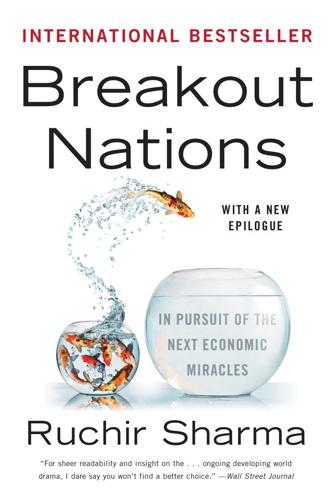
Breakout Nations: In Pursuit of the Next Economic Miracles
by
Ruchir Sharma
Published 8 Apr 2012
It was a chorus of all nations, singing a story of stable high-speed success, and many observers watched with undiscriminating optimism. The emerging nations were all Chinas now, or so it seemed. This illusion, which in large part persists to this day, is fed by the fashionable explanation for the boom—that emerging markets succeeded because they had learned the lessons of the Mexican peso crisis, the Russian crisis, and the Asian crisis in the 1990s, all of which began when piles of foreign debt became too big to pay. But starting in the late 1990s, these formerly irresponsible debtor nations cleaned up the red ink and became creditors, even as former creditor nations, led by the United States, began sinking into debt.
…
Kospi,” 153, 164 drug cartels, 74, 79–80 Dubai, 188, 214, 218–19 Dubai World, 214 Dubrovnik, 97 Dun Qat refinery, 201 DuPont, 9 “Dutch disease,” 179, 220 earnings, corporate, 3 East African Community (EAC), 208–9 East Asia, 8, 10, 46, 131–32, 146, 196–97, 208, 245 “East Asian tigers,” 8, 10, 146 “easy money,” 5–6, 11, 13–14, 38, 105, 133, 176–77, 182–83 economic transformation program (ETP), 151 economies: agrarian, 9, 17–18, 21, 22, 27 business cycles in, 2, 5–6, 11, 223 command-and-control, 29–30, 39, 156, 199–200 commodity, 133–34, 137–38, 223–39 counter-cyclical, 120–21 developing, see developing countries diversified, 165–66 emerging markets in, vii–x, 2–11, 37–38, 47, 64, 94, 185–91, 198–99, 242–49, 254–55, 259–62 forecasting on, x, 1–14, 17, 18, 31–32 global, 1–2, 4–5, 6, 7–8, 9, 12, 14, 18–19, 37, 38, 51–52, 68–71, 153–55, 158–59, 161, 167–69, 170, 176, 178, 183–91, 222–24, 228–31, 233–36, 241–42, 249–54 growth rates in, 8–11, 185–91, 244–49, 254–55 historical trends in, ix–x, 2, 9, 10–11 knowledge, 236–37 parallel, 79–80 recessions in, 5–6, 9, 11, 18, 34, 80, 101, 109, 131, 132, 144, 225, 244, 249–51 “tiger,” 8, 10, 46 volatility of, 249–51 see also specific countries Economist, 207 education, x, 5, 12, 22, 63, 65, 76, 121, 168–69, 206, 218, 220 efficiency, 63–64 “efficient corruption,” 135–37 Egypt: author’s visit to, ix corruption in, 217 economic reform in, 27, 28, 126–27, 217–18 as emerging market, 204, 235 foreign investment in, ix, 92 inflation rate in, 88 revolts in, 127, 216 stock market of, 190 Eighth Malaysian Plan, 151 Einstein, Albert, 238 El Beblawi, Hazem, 128 el dedazo (“the big finger”), 76–77 election cycles, 2 electromagnetic radiation, 17 “electronic wallet,” 208 Elle, 53 emerging markets, vii–x, 2–11, 37–38, 47, 64, 94, 185–91, 198–99, 242–49, 254–55, 259–62 energy efficiency, 226–27 energy sector, 5, 13, 51–52, 67–68, 82, 125, 170, 212–13, 215, 223, 224–29 English language, 37, 52–53, 141, 196, 203–4 entrepreneurship, 38, 43, 58, 96, 144, 166, 186, 225 entry point projects (EPPs), 151 environmental issues, 17, 135 Equatorial Guinea, 210 Erbakan, Necmettin, 114–15 Erdogan, Recep Tayyip, 111, 112, 113–14, 116–18, 123, 124–28, 210, 245 “errors and omissions,” 150 Eskom, 177 Estonia, 109 euro, 100, 105, 107, 108 Eurocentrism, 206 Europe: agriculture in, 231–32 banking system of, 12 Central and Eastern, 8, 11, 97–110, 121, 170, 203, 247 debt levels in, 57, 97, 100, 121–22, 252 economy of, 7, 12, 107–8, 230, 241, 245 foreign investment by, 2, 7, 20, 100, 104–8 foreign trade of, 145, 159 GDP in, 20, 100 government deficits in, 100 growth rate of, 6, 241, 242 manufacturing sector of, 247 political unity of, 11, 49, 53, 97–98, 208–9 recessions in, 101, 132 unemployment in, 101, 126 welfare states in, 63 see also specific countries European Community (EC), 208–9 European Union (EU), 11, 97–98, 101, 105, 106–8, 109, 115–16, 118, 121–22, 159, 253–54 Eurozone, 11, 99–100, 105, 106–8, 109, 121–22, 254 expatriate workers, 219 Facebook, 41 factories, 17–18, 22–23, 28, 43, 67, 68, 132, 230 “fairness creams,” 54 family enterprises, 125–26, 134–38, 155, 160, 161–63, 167–69, 254 “farmhouses,” vii–viii fast-food outlets, 53 Federal Palace Hotel, 212 Federal Reserve Board, 5–6, 222 feeder ships, 200 Femsa, 75 Fiat, 120 fiber-optic cables, 207–8 Fidesz Party, 104–5 Fiji, 4 film industry, 44, 47, 167, 186, 211 “financialization of commodities,” 227–28 Finland, 238, 251 First Coming, 243 fishing industry, 193 five-year plans, 20, 27, 150–51 Forbes, 47, 91 “forced listing,” 188 Ford, 75, 120 foreign investment, vii–x, 2, 7–8, 9, 18, 20, 32, 35–36, 37, 43–44, 49–50, 59, 63, 64, 66, 68–72, 86, 87, 91–94, 100, 104–8, 118, 119–20, 133–35, 137, 139, 140–41, 144, 146–50, 151, 183–84, 198–200, 201, 203–5, 206, 225 foreign trade, vii, x, 6, 7, 13, 18, 20–21, 23, 26, 28, 29, 31, 32–33, 43, 59, 61, 62, 67–68, 72, 75, 80, 83, 85, 86, 90, 117, 120, 122, 132, 133–34, 144–45, 147, 148, 157, 158–59, 162, 178, 183, 196–97, 198, 206, 220, 223, 226, 232, 233–34 Four Seasons Hotel, 111, 232, 233 Four Seasons Index, 232, 233 “$4,000 barrier,” 7–11 Fourth World, 185–91, 204–9, 220, 221 Fox, Vicente, 77 Fraga, Arminio, 72 France, 63, 100, 121, 123–24 Franklin, Benjamin, 214 Freedom House, 205 “free float,” 188 free markets, x, 8–9, 96, 104 French, Patrick, 47 French Riviera, 59–61 frontier markets, 89, 185–91, 213, 261–62 Fujian Province, 164 futures contracts, 5 Gandhi, Indira, 55 Gandhi, Rahul, 48 Gandhi, Sanjay, 55 Gandhi, Sonia, 39 Gandhi family, 39, 47–48, 55, 57 gas, natural, 13, 85, 179, 214, 215, 217, 225, 235 gasoline, 126, 215 GaveKal Dragonomics, 229 Gaziantep, 125 General Electric, 9 generators, electric, 212–13 Germany: billionaires in, 45 economy of, 103 as EU member, 107, 121 GDP of, 247 low-context society of, 40 manufacturing sector in, 157, 158–59, 247 population of, 37 public transportation in, 16 South Korea compared with, 168–69 Germany, East, 102 Gertken, Matthew, 29 Ghana, 187 Gibson, Mel, 129 Gini coefficient, 173 Girl’s Generation, 167 glass manufacturing, 221 Globo, 61 GM, 75, 163 “go-go stocks,” 3 gold, 3, 141, 176, 178, 179–80, 192, 202, 205, 224, 229–30 “Goldilocks economy,” 4, 5–6 gold shares, 179–80 gold standard, 178 Goldstone, Jack, 217 Goodhart, Charles, 11 Goodhart’s law, 11 Google, 41, 237–38 Gorbachev, Mikhail, 103 “Goulash Communism,” 101 government paper, 116 government spending, 41–42, 63, 65, 66–67, 70–71, 72, 86, 87–88, 109, 133, 181–83, 190 government transformation program (GTP), 151 graft, 43–44 see also corruption Great Britain: auto industry in, 31 empire of, 49, 118, 192 foreign investment by, 206 government of, 89 labor force of, 100 public transportation in, 16 socialism in, 150 Great Depression, 101, 109, 252–53 Great Moderation, 250–51 Great Recession (2008), 5–6, 9, 59, 66, 76, 80–81, 88, 92–93, 100, 101, 102, 103, 109, 119, 122, 131, 144, 180, 189, 225, 243, 247–49, 250, 254 Greece, 11, 27, 30, 99, 100, 107–8, 121, 181, 252 green revolution, 231–32 Greenspan, Alan, 6 gross domestic product (GDP), 1, 3–4, 6, 17, 18, 20, 26, 32, 43, 49, 57, 63, 65, 66, 67, 72, 85, 92, 100, 107, 110, 116, 117, 119, 120, 121, 131, 133, 139, 140, 141, 142, 144–45, 147, 149, 155, 157, 158, 159, 161, 165, 170, 173, 178–79, 180, 191, 206, 208, 210, 214, 215, 217, 218, 219, 228, 236, 243, 247, 252 Group of Twenty (G20), 215 growth corridors, 151 Gül, Abdullah, 118, 123–24, 127 Gulf States, 214–21, 244, 245 see also specific states Gupta, Anil K., 237 Habarana, 196 Hall, Edward, 39–40 Hallyu, 167 Hambantota, 197 Hanoi, 198, 200 Han people, 53 Harmony Gold, 180 Harvard School of Public Health, 241 Havel, Václav, 111 Hayek, Friedrich, 109 Hazare, Anna, 42–43 headscarves, 123–24 health care, 63 helicopters, 60, 64, 72 herd behavior, 8, 228–31 high-context societies, 39–40, 41, 47 high-speed trains, 15–16, 20, 21 highways, 17, 20, 21, 65, 231 Hindi language, 52–53, 56 “Hindu rate of growth,” 174 Hindustan Times, 53 Hirsch, Alan, 178 Ho Chi Minh City, 200, 201, 203 Honda, 161 Hong Kong, 9, 141, 235 “Hopeless Continent,” viii Hotel Indonesia Kempinksi, 129 hotels, 12, 31, 59–61, 65, 111, 232, 233 “hot money,” 149–50 housing prices, 5–6, 16, 18, 24–25, 28–29, 31, 32, 61, 92, 103–4 HP, 158 Huang, Yukon, 28 Huang Guangyu, 46 Hu Jintao, 29 Humala, Ollanta, 66–67 human-rights violations, 193 Hungary: banking in, 105 as breakout nation, 99–100, 101 economic growth of, 99, 104–6, 109 as emerging market, 104–6 as EU candidate, 100, 105 foreign investment in, 104, 105 GDP of, 100 growth rate of, 244 income levels of, 8 industrial production in, 101 political situation in, 104–5, 109 population of, 106 post-Communist era of, 101, 104 welfare programs of, 106 Hussein, Saddam, 195 Huxley, Aldous, x hyperinflation, 39, 42, 62, 66 “hypermarkets,” 90–91 Hyundai, 90, 156, 158, 161–63, 168 identification cards, 213 immigration, 79, 82, 85, 95 income: national levels of, 4, 8, 11, 16–21, 24–25, 31–32, 38, 58, 61, 63, 72, 75, 83, 86–87, 88, 97–98, 113, 116, 121, 138, 139–40, 141, 144, 145, 148, 153–55, 157, 173, 176–77, 182–83, 204 per capita, ix, 7–8, 11, 13, 19–21, 41, 58, 61, 63, 72, 73–75, 76, 88, 97–98, 109, 116, 127, 131–32, 138, 148, 176–77, 204, 207, 216, 244, 245–46 taxation of, 44, 51, 63, 76, 86, 106, 126–27, 182, 214, 221 India, 35–58 agriculture of, 38, 44, 54, 57 auto industry of, 54, 161, 162, 173 baby-boom generation in, 37–38 billionaires in, viii, 25, 44–47, 79, 254 Brazil compared with, 10, 39–43, 61, 70 as breakout nation, 38–39, 49 capitalism in, 38–39, 42, 46–47, 49, 50–51, 58 China compared with, 1, 10, 19, 25, 36, 37–38, 41, 45, 47, 52, 53, 56, 57, 58 consumer prices in, 38, 39, 49, 52–54, 57 corruption in, 42, 43–44, 45, 46–47, 49–51, 58 credit market in, 38, 51 debt levels in, 57–58 democracy in, 30, 48–49, 50, 55–56, 58 “demographic dividend” for, 37–38, 55–56, 58 domestic market of, 36, 43 economic reforms in, 28, 38–39, 49 economy of, 28, 35–58, 174, 204 elections in, 48–49, 50, 55 “Emergency” period of, 55–56 as emerging market, 3–4, 10, 30, 35–39, 43, 49, 106, 253 English spoken in, 37, 52–53 entrepreneurship in, 38, 43, 58 film industry of (Bollywood), 44, 47, 167, 211 forecasts about, 35–36, 37, 39–40 foreign investment in, vii–viii, 7, 35–36, 37, 43–44, 49–50, 183, 225 foreign trade of, vii, 43, 157 Gandhi family in, 39, 47–48, 55, 57 GDP of, 1, 3–4, 43, 49, 57 as global economy, 1, 37, 38, 51–52 government of, 30, 38–39, 41–43, 47–52, 55–58 government spending in, 41–42 growth rate of, 3–4, 9, 30, 35–58, 61, 64, 87, 88, 174, 241, 244 high-context society in, 39–40, 47 income levels of, 8, 19, 54, 58 independence of, 174, 175, 176 Indonesia compared with, 135, 136 inflation rate in, 39, 43–44, 248 infrastructure of, 10, 43, 51 investment levels in, 43–44, 49–50 labor market in, 38, 55 leadership of, 38–39, 41–42, 47–52, 57–58, 174 License Raj of, 38 middle class of, 42–43, 52–56 mining industry of, 44, 254 natural resources of, 51–52, 235 northern vs. southern, 49–52, 54, 58 outsourcing industry in, 141 parliament of, 43, 44, 47–49 political situation in, 30, 37, 38–39, 47–49, 50, 55–58, 174 population of, 19, 37–38, 52–56, 57, 58, 95 poverty in, 41–42, 52–53, 57–58 price levels in, 53 productivity in, 64 real estate market in, 44, 254 “rope trick” in, 35–36, 36, 37, 58 rural areas of, 38, 57 Russia compared with, 36–37, 44–45, 46, 87, 88, 95 social unrest in, 42–43, 55–56 Sri Lanka’s relations with, 196, 197 state governments of, 37, 44, 48–52 sterilization (vasectomy) program in, 55–56 stock market of, 36–37, 38, 70, 189, 243, 244 taxation in, 44, 51 technology sector of, 141, 166, 254 unemployment in, 41–42 wealth in, vii–viii, 25, 44–47, 57, 79 welfare programs of, 10, 41–42 India: A Portrait (French), 47 Indian Ocean, 197 Indonesia, 129–38 in Asian financial crisis, 131–35 banking in, 133–34, 135 billionaires in, 131–32 China compared with, 132–33, 135, 136 Chinese community in, 129 consumer prices in, 137–38, 232 corruption in, 134–35 currency of (rupiah), 131 economic reforms in, 132–38, 147 economy of, 28, 132–38, 147, 174, 254 elections in, 136–37 as emerging market, 133, 232 family enterprises in, 134, 138, 254 foreign investment in, 7, 133–35, 137 foreign trade of, 132, 133–34, 157, 159 GDP of, 131, 133 government of, 30, 132–37 growth rate of, 132–33, 136, 137, 245, 246, 254 income levels of, 8, 131–32, 138 India compared with, 135, 136 inflation rate of, 137–38, 249 labor market in, 23, 203 land development in, 135–36 national debt of, 134–35 natural resources of, 133–34, 159, 235 Philippines compared with, 132, 138, 140 political situation in, 129, 132, 133, 134, 135, 136, 137, 210 population of, 133, 136 Russia compared with, 137–38 urban decentralization in, 136–37 wealth of, 131–38 industrialization, 10, 67, 68, 101 inflation rate, x, 4, 5, 17, 22, 23, 24, 25, 31, 33, 39, 42, 43–44, 62, 66, 68–69, 88, 104, 115, 116, 118, 137–38, 176, 177, 179, 202, 226, 228, 247–49, 250, 254 Infosys, 37 infrastructure, x, 10, 15–16, 20–21, 43, 51, 61, 62, 64, 65, 69, 84–85, 88, 90–91, 116, 120–21, 199, 200–201, 239 inheritance taxes, 44 insider trading, 46, 187 Institutional Revolutionary Party (PRI), 76–78 Intel, 164, 203–4 intellectual property, 238 interbank loans, 150 interest rates, 6, 11, 62, 67, 68–70, 105, 106, 107, 115, 119, 120, 228–29, 247–49, 250 internal devaluation, 108, 109 International Finance Corporation, 214 International Monetary Fund (IMF), 101, 115, 160, 173, 208, 216–17 Internet, 2, 85, 173, 175, 177, 207–8, 220, 225, 230, 237–39 interregional exports, 206–7 investment, viii, x, 2–8, 19, 37, 90, 96, 131, 144, 146–50, 156, 160–61, 165, 190, 212–13, 220, 223–29, 231, 235, 236–38, 244 see also foreign investment Ipanema Beach, 21, 61, 65, 66 Iran, 10, 123, 189, 190 Iraq, 10, 122, 189, 195 iron, 51–52, 59, 67, 69, 180, 232 Iron Curtain, 101 Iskandar region growth agenda, 151 Islam, 111, 113–17, 119, 121, 122, 123–24, 127, 146, 162, 211, 219, 220, 246 Islamic Museum, 219 Israel, 122, 127 Istanbul, 111, 115, 122, 125, 146 Italy, 40, 99 Ivory Coast, 208 Izmir, 115, 124, 125, 146 Jaffna Peninsula, 193, 195 Jakarta, 129–31, 135, 136, 137, 232 Jalan Sudirman, 129 Japan: in Asian financial crisis, 155–56 auto industry of, 139, 144, 161 China compared with, 18, 20, 22, 24, 31, 32–33 currency of (yen), 32–33 democratic government of, 30 economic slowdown of, 22, 254 economy of, 8, 20, 22, 81, 90, 197, 230, 235, 242, 253, 254 foreign trade of, 7, 32–33, 144–45, 157, 159 GDP of, 144–45 growth rate of, 6, 32–33, 44, 235 income levels of, 20, 138, 144 inflation rate in, 31 manufacturing sector of, 157, 159, 170, 230, 235 pop culture in, 167 population of, 169 property values in, 24, 252 public transportation in, 20 real estate market in, 3 recession in, 109 research and development (R&D) in, 160–61, 237 social conformity in, 200 South Korea compared with, 153, 155–56, 157, 159, 160–61, 163, 164, 167, 168, 169, 170 stock market of, 156, 235 Taiwan’s relations with, 163–64 technology industry of, 160–61, 236–38 Thailand compared with, 139, 144–45 Java, 137 “Jeepneys,” 130, 138 Jews, 118, 149 Jharkhand, 46 Jiang Zemin, 29 Jobbik (Movement for a Better Hungary), 105 Jockey underwear, 54 Johannesburg, 181, 204 Jonathan, Goodluck, 209–11, 213 Jordan, 122 J-pop, 167 junk bonds, 228 “just-in-time” supply chains, 80 Kabila, Laurent, 205 Kagame, Paul, 206 Kano, 213 Kaohsiung, 136 Kapoor, Ekta, 41 Karachi, 190 Karnataka, 50, 51 Kashmir, 49, 50 Kasimpasa neighborhood, 125 Kayseri, 124 Kazakhstan, 30, 89, 93, 123, 212 Kazan, 85 Kennedy, John F., 129 Kenya, 191, 205, 209 Keynes, John Maynard, 109 KGB, 86 Khodorkovsky, Mikhail, 87 Kia, 161, 162–63 kidnappings, 78–79, 190–91 Kim Jong Il, 170 Kinshasa, 205 Kirchner, Cristina, 89 Kirchner, Nestor, 89 Klaus, Vaclav, 108 Koç family, 125 “Korea Discount,” 167–69 “Korean Wave,” 122, 167 KOSPI index, 70, 153, 155, 156, 164, 165 K-pop, 122, 154, 167 Kuala Lumpur, 147, 148, 151 Kumar, Nitish, 50–51 Kuwait, 187–88, 214, 216, 218, 219 Kuznets curve, 76 labor market, 7, 17, 21–23, 27, 32, 38, 47, 55, 64, 65, 76, 77, 102, 103, 104, 164, 169–70, 174–75, 179, 180–81, 199, 203–4, 246–47 Lada, 86 Lafarge, 213 Lagos, 211, 212, 213 landlines, 207 land-use laws, 25, 168 Laos, 188 laptop computers, 158, 164 large numbers, law of, 7 Last Train Home, The, 22–23 Latin America, viii, 40–41, 42, 73–75, 81, 89, 246 see also specific countries Latvia, 101 Lavoisier, Antoine, 235–36 law, rule of, x, 50–51, 89, 96, 127, 181–82 lead, 19 Leblon neighborhood, 61 Lee Kwan Yew, 118, 148, 193 Lehman Brothers, 164 Le Thanh Hai, 203 Lewis, Arthur, 21 “Lewis turning point,” 21 LG, 158, 163 “Liberation Tigers” of Tamil Eelam, 192–93, 197 Liberty, 178 Libya, 127, 216 Limpopo River, 171 Linux, 238 liquidity, 9, 228–30 liquor stores, 126 literacy rate, 52 Lithuania, 101, 109 Lixin Fan, 22–23 loans, personal, 12, 24, 116, 125, 150 long-run forecasting, 1–14 L’Oréal, 31 Louis Vuitton, 31 Lugano, 40 Lula da Silva, Inácio, 59, 61, 66, 70, 210, 226, 248 luxury goods, vii–viii, 12, 25, 31, 236 Macao, 201 macroeconomics, 7–8, 13, 66, 67, 145–46, 188 “macromania,” 7–8, 188 Made in America, Again, 246–47 “made in” label, 155, 246–47 Madhya Pradesh, 52 maglev (magnetic levitation) trains, 15–16, 231 Magnit, 90–91 Mahatma Gandhi National Rural Employment Guarantee Act (MGNREGA), 41–42 Malaysia, 146–52 in Asian financial crisis, 18, 131–32, 146–47, 149–50 banking in, 146, 149–50, 151, 252 currency of (ringgit), 131, 146–47, 149 economic planning in, 150–52, 161 economy of, 18, 118, 150–52, 161, 235 electronics industry of, 147–48 as emerging market, 10, 45, 118, 149, 161, 235 foreign investment in, 146–50, 151 foreign trade of, 6, 144, 147, 157 GDP of, 145, 147, 149 government of, 146, 148–52 growth rate of, 9, 147–48, 149, 244 income levels of, 138, 148 manufacturing sector in, 147–48, 150 political situation in, 146–49 Singapore compared with, 118 stock market of, 131, 235 Thailand compared with, 144, 145, 147 wealth of, 148 Mali, 208 Malta, 30, 106 Malthus, Thomas, 225, 231–32 Mandela, Nelson, 171, 172, 176 Manila, 130, 138, 139, 140, 141 Manuel, Trevor, 176 manufacturing sector, 17–18, 22–23, 28, 43, 54, 75, 80, 88–89, 90, 110, 124, 132, 147–48, 150, 155, 157, 158–59, 160, 161–66, 168, 170, 180, 221, 230, 235, 246–47, 265 Maoism, 37, 47 Mao Zedong, 21, 27, 29 Marcos, Ferdinand, 138, 139, 210 markets: black, 13–14, 96, 126 capital, 69, 70–71; see also capital flows commodity, 12, 13–14, 223–39 currency, 4, 9, 13, 28 domestic, 36, 43, 183 emerging, vii–x, 2–11, 37–38, 47, 64, 94, 185–91, 198–99, 242–49, 254–55, 259–62 free, x, 8–9, 96, 104 frontier, 89, 185–91, 213, 261–62 housing, 5–6, 16, 18, 24–25, 28–29, 31, 32, 61, 92, 103–4 labor, 7, 17, 21–23, 27, 32, 38, 47, 55, 64, 65, 76, 77, 102, 103, 104, 164, 169–70, 174–75, 179, 180–81, 199, 203–4, 246–47 see also stock markets Mato Grosso, 232 Mayer-Serra, Carlos Elizondo, 78 MBAs, 225 Mbeki, Thabo, 176, 206 Medellín drug cartel, 79 Medvedev, Dmitry, 95–96 Mercedes-Benz, 86, 144 Merkel, Angela, 108 Mexican peso crisis, 4, 9 Mexico, 73–82 antitrust laws in, 81–82 banking in, 81, 82 billionaires in, 45, 47, 71, 78–80 Brazil compared with, 71, 75 China compared with, 80, 82 consumer prices in, 75–76 corruption in, 76–77 currency of (peso), 4, 9, 73, 80, 131 drug cartels in, 79–80 economy of, 4, 12, 28, 73–82, 178, 183 emigration from, 79, 82 foreign exports of, 6, 75, 80, 158 GDP of, 76, 77, 81 government of, 76–78 growth rate of, 73–82, 244 income levels of, 8, 73–75, 76, 113 labor unions in, 76, 77 national debt of, 76, 80–81 nationalization in, 77–78 oil industry of, 75, 77–78, 82 oligopolies in, 73, 75, 76–82, 178 parliament of, 76–77 political situation in, 76–78, 82 population of, 73 stock market of, 73, 75, 76, 81 taxation in, 76 U.S. compared with, 75, 79, 80 Mexico City, 75 micromanagement, 151 middle class, 10, 19–20, 33, 42–43, 52–56, 182, 211, 236 Middle East, 38, 65, 68, 113, 116, 122, 123, 125, 166, 170, 189, 195, 214–21, 234, 246 middle-income barrier, 19–20, 144–45 middle-income deceleration, 20 Miller, Arthur, 223 minimum wage, 29, 63, 126, 137 mining industry, 44, 93, 154, 175, 176, 178–80 Miracle Year (2003), 3–6 misery index, 248–49 Mittal, Sunil Bharti, 204–5, 206, 209 mobile phones, 53, 86, 204–5, 207–8, 212, 237 Mohammed, Mahathir, 146–47, 148, 151 Moi, Daniel arap, 205 monetization, 225 Money Game, The (Smith), 234 Mongolia, 191 monopolies, 13, 73, 75–76, 178–79 Monroe, Marilyn, 129 Monte Carlo, 94 “morphic resonance,” 185 mortgage-backed securities, 5 mortgages, 5, 92, 105–6 Moscow, 12, 83, 84, 90, 91, 96, 136, 137, 232 mosques, 111 Mou Qizhong, 46 Mozambique, 184, 194–95, 198, 206 M-Pesa, 208 MTN, 212–13 Mubarak, Gamal, 218 Mubarak, Hosni, 92, 127, 218 Mugabe, Robert, 176, 181 Multimedia Supercorridor, 151 multinational corporations, 53, 73, 75, 81, 151, 158–59, 160, 184, 230 Mumbai, 43, 44, 79, 214, 244 Murder 2, 167 Murphy’s law, 11 Muslim Brotherhood, 127 Mutual, 178 mutual funds, 178–79 Myanmar, 30 Myspace, 41 Naipaul, V.
…
At the low point in mid-1998, the combined stock market value of the key East Asian economies (Thailand, South Korea, Indonesia, Malaysia) was $250 billion, or less than the value of General Electric. Since then the East Asian stock markets have surged tenfold in dollar terms. In retrospect, 1998 offered investors a rare opportunity to buy into those markets. In all of the regional financial crises going back to the Mexican Tequila Crisis of 1994, the country where the crisis started saw its stock market drop 85 percent on average (for example, Thailand in 1997–1998), while all of the markets in the region fell by an average of 65 percent. Europe is at a similar point today. The Eurozone crisis started in Greece, where the market is up slightly from a maximum decline of 90 percent, and the rest of peripheral Europe—Portugal, Italy, Ireland, and Spain—hit maximum declines that averaged 70 percent.
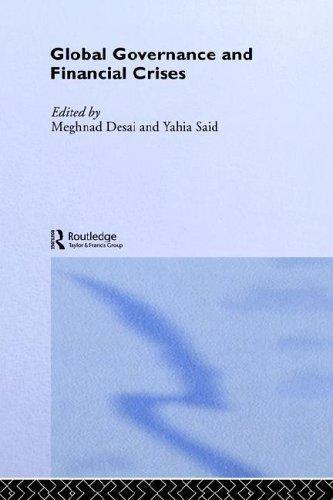
Global Governance and Financial Crises
by
Meghnad Desai
and
Yahia Said
Published 12 Nov 2003
The need is to invest resources into building models based on the best available theory, calibrate them and then test which of the alternative provides a plausible explanation. It is not an easy task. It will require combining finance theory, econometrics and political economy. But it needs to be done. Notes 1 For the affairs at LTCM see Lowenstein, R. (2000) ‘When genius failed’, The Rise and Fall of Long Term Capital Management, Random House, New York. The Mexican peso crisis, which happened in December 1994, was regional and did not grow into a global crisis as the Asian one did. I am excluding it therefore. There were other national crises in Russia, Turkey, Argentina and Brazil. 2 For the 1998 debate on financial architecture see Eatwell and Taylor (1998). They propose a World Financial Authority as a regulator rather than a lender of last resort. 3 For excess volatility see Soros, George (2000) and for overvaluation and persistent bubble Shiller, R. (2001) Irrational Exuberance, Princeton University Press, Princeton, NJ. 4 Fama, E. (1970) Efficient capital markets: a review of theory and empirical work, Journal of Finance, 25: 383–417.
…
The social costs of the public policy responses have been very considerable, usually involving bail-outs of much of the financial sector and the corporate sector more generally. There have also been considerable misgivings in East Asia about how differently the IMF responded to the East Asian crises compared to the earlier Mexican crisis. It is widely believed that the IMF was far more generous in helping Mexico due to US interest in ensuring that the 1994–95 tequila crisis not be seen as an adverse consequence of Mexico’s joining the North American Free Trade Agreement (NAFTA). In contrast, East Asians saw the IMF as far less generous and far more demanding with them despite having been previously held up as miracle economy models for emulation by others. The disappointment has been compounded by the fact that all three countries had long seen themselves as US (and Western) allies, and hence, expected favoured treatment instead.
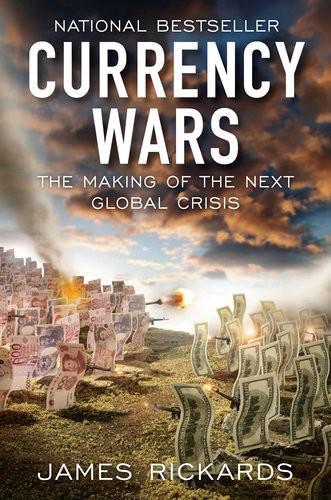
Currency Wars: The Making of the Next Gobal Crisis
by
James Rickards
Published 10 Nov 2011
For now, there was relative peace in international monetary matters, yet this peace rested on nothing more substantial than faith in the dollar as a store of value based on a growing U.S. economy and stable monetary policy by the Fed. These conditions largely prevailed through the 1990s and into the early twenty-first century, notwithstanding two mild recessions along the way. The currency crises that did arise were nondollar crises, such as the sterling crisis of 1992, the Mexican peso crisis of 1994 and the Asia-Russia financial crisis of 1997–1998. None of these crises threatened the dollar—in fact, the dollar was typically a safe haven when they arose. It seemed as though it would take either a collapse in growth or the rise of a competing economic power—or both—to threaten the supremacy of the dollar.
…
Global Skirmishes Apart from the big three theaters in the currency war—the Pacific (dollar-yuan), the Atlantic (euro-dollar) and the Eurasian (euro-yuan) —there are numerous other fronts, sideshows and skirmishes going on around the world. The most prominent of these peripheral actions in the currency war is Brazil. As late as 1994, Brazil maintained a peg of its currency, the real, to the U.S. dollar. However, the global contagion resulting from the Mexican “Tequila Crisis” of December 1994 put pressure on the real and forced Brazil to defend its currency. The result was the Real Plan, by which Brazil engaged in a series of managed devaluations of the real against the dollar. The real was devalued about 30 percent from 1995 to 1997. After this success in managing the dollar value of the real to a more sustainable level, Brazil once again became the victim of contagion.
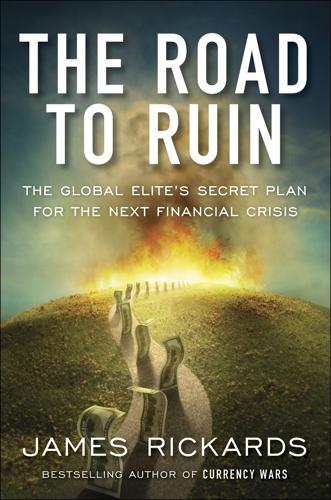
The Road to Ruin: The Global Elites' Secret Plan for the Next Financial Crisis
by
James Rickards
Published 15 Nov 2016
With floating exchange rates, an ice age ended, glaciers melted, and the world was awash in a sea of liquidity. This was the financial equivalent of global warming. There was no problem that could not be solved with low rates, easy money, and more credit. Easy money did not end financial crises; far from it. There was a Latin American debt crisis beginning in 1982, a Mexican peso crisis in 1994, an Asian-Russian financial crisis in 1998, and the 2007–9 global financial crisis. In addition, there were occasional market panics including October 19, 1987, when the Dow Jones Industrial Average fell 22 percent in one day. Other market crashes included the burst dot-com bubble in 2000, and the market break after the 9/11 attacks.
…
It was the blind leading the blind. In the past thirty years, global capital markets reached critical mass and headed toward complete collapse four times. The first was October 19, 1987, Black Monday, when U.S. stock markets fell over 20 percent in one day. The second was December 20, 1994, the Tequila Crisis, when Mexico devalued the peso 15 percent in one day. The third was August 17, 1998, when Russia devalued the ruble and defaulted on its debt, leading to the LTCM collapse. The fourth was June 20, 2007, when two Bear Stearns hedge funds collapsed after a failed rescue attempt leading to the Lehman crisis the following year.

The Rise and Fall of Nations: Forces of Change in the Post-Crisis World
by
Ruchir Sharma
Published 5 Jun 2016
Yet time and again in recent decades, the world has been gripped by currency contagions, in which investors start pulling money out of one troubled country, triggering a pullout from countries in the same region or income class even though those nations can pay their bills. In a way, the serial crises that have rocked the emerging world since the 1970s are one rolling crisis built on the recurring fear that poor nations won’t have the money to pay their bills. The Mexican peso crisis of ’94 begat the Thai crisis of ’97 begat the Argentine crisis of 2002 and many others, trampling more than a few innocent-victim nations along the way. At the first signs that one emerging-world currency is faltering—as the Thai baht did in 1997—investors often flee from emerging markets in general.
…
Capital flight begins with locals, I suspect, because they have better access to intelligence about local conditions. They can pick up informal signs—struggling businesses, looming bankruptcies—long before these trends show up in the official numbers that most big foreign institutions rely on. Balance of payments data show that during Mexico’s “tequila crisis” in December 1994, when the currency peg against the dollar came unstuck, locals started to switch out of pesos and into dollars more than eighteen months before the sudden devaluation. Years later Russians began to pull money out of their country more than two years before the ruble collapsed in August 1998.
…
Over the last three decades, the world has been subjected to increasingly frequent financial crises, each one setting off a hunt for the clearest warning sign of when the financial mine is about to blow again. Every new crisis seemed to produce a new explanation for crises in general. The postmortems after Mexico’s “tequila crisis” of the mid-1990s focused on the dangers of short-term debt, because short-term bonds had started the meltdown that time. After the Asian financial crisis of 1997–98, it was all about the danger of borrowing heavily from foreigners, because foreigners had suddenly cut off lending to Thailand and Malaysia when their problems became clear.
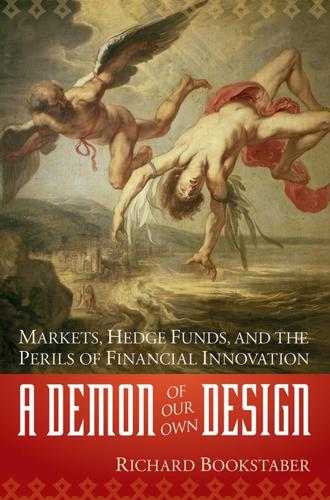
A Demon of Our Own Design: Markets, Hedge Funds, and the Perils of Financial Innovation
by
Richard Bookstaber
Published 5 Apr 2007
The second was our own Internet bubble that witnessed the NASDAQ rise fourfold in a little more than a year and then decline by a similar amount the following year, ultimately cascading some 75 percent. This same period was peppered with three major currency disasters: the European Monetary System currency crisis in 1992; the Mexican peso crisis that engulfed Latin America in 1994; and the Asia crisis, which spread from Thailand and Indonesia to Korea in 1997, and then broke out of the region to strike Russia and Brazil. The Asia crisis triggered losses that wiped out the majority of the market value that the Asian “Tiger” economies had amassed in the prior decade of booming growth.
…
Senate hearings, 129–130 Epstein, Sheldon, 46–47, 49 index-amortizing swap, 116 Equity trading profitability, 71–75 proprietary reliance, 73–74 European Monetary System currency crisis (1992), 3 Event risk, 248–249 Factor exposures, 202 Fair value basis, 29 Federal Deposit Insurance Corporation (FDIC), 113 Federal Reserve policy shifts, 85 rate hike, impact, 53 Feduniak, Bob, 42, 52 Feuerstein, Donald, 196 Financial instability, aspects, 3–4 Financial markets, 224–225 Financial risk, 256–257 Fisher, Andy, 59, 80 Fixed income focus, 251–252 Fixed income research (FIR), 8–9, 43–44 Flood, Gene, 190 Franklin, Mark, 97 Free-floating anxiety, 235 Frictionless markets, 209 FrontPoint Partners, 204, 205 FTSE Index, 117 Fundamental data, 166 Furu, example, 233–235 Futures market, 17–19 Futures shock (1635), 175–177 Galbraith, John Kenneth, 16 Gamma, problems, 24–25 General Electric (GE), 41–42 Generally accepted accounting principles (GAAP), 135 Geographic regions, classification, 246 Global Crossing, restatements/liability, 135 Godel, Kurt, 222–224, 227–228 Gold, Jeremy, 8–9 Goldman Sachs acquisition, 75 public offering, delay, 109 Goldstein, Ramy, 116–118 Gracie family, 258–259 Gracie, Gastao, 258 Greenhill, Bob, 73 Greenmail, taxation, 13–14 Gross Domestic Product (GDP), 3–4 Growth bias, 202 Grubman, Jack, 128–130, 134 MCI/BT involvement, 69–71 nursery school admissions, 131–132 Gutfreund, John, 62–63, 105, 195–197 resignation, 199 Haghani, Victor, 102–104, 110, 112 Hall, Andy, 63–67 Hawkins, Greg, 51 Hedgefundedness, 243–244 Hedge funds, 165, 207, 214–215, 243 classification, problem, 245 classification, 245–246 control, 252–253 defining, 245 economic service, 219 existence, question, 244 regulation, 247–250 Heisenberg, Werner, 223–228 Hilibrand, Larry, 79, 110, 113 Human error, 149 272 bindex.qxd 7/13/07 2:44 PM Page 273 INDEX Kaplan, Joel, 44–45 Kaplanis, Costas, 63, 79 Kidder, Peabody, 39–42 Knowledge, limits, 221–230 Krasker, Bill, 86 Liquidity basics, 213–220 complexity, relationship, 145 demand, 26, 191 hedge fund classification, 246 history, 217–218 impact, 212–213 needs, 183 providers, 213–215 role, 215–220 squeeze, prospects, 105 suppliers, 22, 192–193 supply, price elasticity, 94–95 transparency, 226 Liquidity crisis cycle, 93–94 prevention, 94–95 providing, hedge funds (impact), 214–215 Long-range forecasting, 228 London Exchange, Rothschild visit, 90 London Interbank Offered Rate (LIBOR) government rates, parity, 57 higher-yielding LIBOR bond, 57 LIBOR-denominated debt, 56 Long-dated call options, 57 Long-Distance Discount Service (LDDS), acquisitions, 70 Long/short equity hedge funds, 200–205 Long-Term Capital Management (LTCM) capital reserves, assumption, 106–108 collapse, 93 decision point, 110 disaster, 57, 60, 92–93, 100, 145 hedge fund debacle/crisis, 1–3 leverage cycle, 97 liquidity risk, 107–108 losses, 108–111 management, initiation, 195–200 market price positions, feedback, 112 market risks, modeling/monitoring, 111–112 problems, public knowledge, 104–105 repurchase agreement, problem, 104 risk arbitrage position, 107 risk burden, 108 Long-term rates, short-term rates (interaction), 47 Loops, usage/impact, 45 Loosely coupled system, 157 Lorenz, Edward, 227–229 deterministic systems, 229–230 Langsam, Joe, 232, 236–237 Laplace, Pierre-Simon, 223, 225 Lead-lag strategy, 193–194 Leeson, Nick (impact), 38–39 Leibowitz, Marty, 8, 51, 53 Leland, Hayne, 10 Leverage, 244 amount, reduction, 260 crisis, occurrence, 111–113 regulations, imposition, 248 Levin, Carl, 130 Lewis, Michael, 52 Liquidation ability, 93 Mack, John, 28, 29, 35, 37 trader emulation, 35 Macro data, usage, 166–167 Macro strategies, 202 Maeda, Mitsuyo, 258 Margin-induced sale, 94 Market aberrations, opportunities, 122 breakdown, reaction, 146 crises, worsening (aspects), 3–4 cycle, basis, 169 decline, respite, 23–24 exponential growth, 17 Illiquidity, cost, 217–218 Index-amortizing swap, 46–48 Information flow, process, 210 implications, derivation, 170–171 overload, 220–230 Information-based trading, 166 Information Technology (IT), support function, 185–186 Initial public offerings (IPOs), 72 creation, 173–174 issuance, amount, 178–179 Innovation, positive effects, 255–256 INSEAD, 66 Intangibles, 137–138 Interactive complexity, 154–157 Interest only (IO), 55 Interest rate, 84–85, 87 International Monetary Fund (IMF) package, 103 Internet bubble, 179–181 businesses, virtual nature, 172 stocks, run-up (1998), 178 Interrelated markets, complexity (by-product), 143 Intraday price movement, 183 Inventory service, 71 Investment buyers, scare, 22 coverage, 249–250 investor behavior, 203–204 strategy, 247 type, classification, 246 Investors, irrational behavior, 203–204 Irrational markets, impact, 180–181 Iverson, Keith, 48 Iverson, Ken Japan, liquidity, 39 Japanese swap spread strategy/profit, 100 Jenkinson, Robert Banks, 89–90 Jett, Joe, 39–41 Jiu Jitsu Academy, 258 Jones, Paul Tudor, 165 Junk bonds, 71 273 bindex.qxd 7/13/07 2:44 PM Page 274 INDEX Market (Continued) failures, safeguards, 239–240 illiquidity, portfolio insurance by-product, 14 innovation, 11–12 makers, problem, 191–192 regulation, 146–154 risk, paradox, 1 volatility, 5, 25 vulnerability, 224–225 Market bubbles, 168–174 Market-to-book ratio, 138 Marx, Karl, 250 Marxist backward market, exploitation, 250 Material adverse change clause, 65 Maughan, Deryck, 59, 73–77 MCI Communications British Telecom (BT), merger/trade, 63–64, 67, 128 conclusion, 74 EPS, decline, 70 renegotiation, willingness, 67–68 stock, decline, 64 Mean-reversion analysis, 190 Mechanical failure, 149 Mercury Asset Management, 196 Mergers and acquisitions (M&A) advice/underwriting, 33 Meriwether, John, 52, 100, 197 resignation, 199 Merrill Lynch, 42 Merton, Robert, 9, 207 Metallgesellschaft Refining and Marketing (MGRM), oil price risk (offloading), 37–38 Mexican Brady bond/Eurobond spread, 107 Mexican peso crisis (1994), 3 Miller, Heidi, 78–80, 140 Modigliani, Franco, 208–209 Money flows, 167 Morgan Stanley APL, usage, 44–45 Dean Witter, merger, 75 IT department, 43 portfolio insurance, 10–12 risk arbitrage department, 15 risk manager, 42 Morgan Stanley Asset Management (MSAM), 11 Morgan Stanley Investment Management (MSIM), 205 Mortgage-backed securities (MBSs), 54–56, 213 Mortgage market, 35, 54–55, 102 Mortgages, opportunities, 35 Mozer, Paul, 195–198 Munger, Charlie, 62, 99, 101, 197–198 Myojin, Sugar, 59, 63, 78–79 Natural catastrophe, 257 New York Stock Exchange (NYSE) specialists, impact, 20–21 stock sale, 13 Noncash exchanges, 40 Norman Conquest, 215 Norris, Floyd (editorial), 91–92 O’Brien, John, 10 One-off events, 249 Opportunistic strategies birth/death cycle, 252 history, 251 Optimal behavior, mathematical framework, 237–240 Options, stripping, 117 Option theory, 24 Orange County, bankruptcy, 38 Organizational dysfunction, 134–136 Pacioli, Luca, 136–137 Pairwise stock trades, 187 Palmedo, Peter, 17, 28–29 Paloma Partners Management Company, 42 Pandit, Vikram, 12 Parets, Andy, 63–69 Parkhurst, Charlie, 85 Partnership model, 37 Perfect market paradigm, 209–210 imperfections, 210–212 liquidity, degree, 212–213 Phibro, Salomon acquisition, 66 Physical processes, modeling, 229 Platt, Bob, 7–8 Portfolio insurance, 10–15 market crash, 22 Portfolio managers, loss (risk), 204–205 Position disclosure, problems, 225 transparency, increase (financial market regulator advocacy), 225 Preference shares, illiquidity, 115 Price convergence, 121–122 Primal risk, 235–237 knowledge, limits, 230–232 Primogeniture, 215–220 implications, 216–217 objective, impact, 216 Principal only (PO), 54–55 Principia Mathematica (Russell), 221–223 Procter & Gamble, losses, 38 Program trading, absence, 24–25 Protest bids, 195–196 Quants, 8–9, 82–84 Quantum Fund, 180–181 Quattrone, Frank, 72 Rational man approach, 231 Real assets, valuation, 137–138 Real-world risk, 237–238 Reed, John, 127 Relative strength index (RSI), 190 Relative value trades, 101–102 Rhoades, Loeb, 125 RISC workstations, 191 Risk control, 220 knowledge, absence, 231–232 management, 36 nature, variation, 249 reduction, 185 progress/refinement, impact, 4 tactical usage, 200 274 bindex.qxd 7/13/07 2:44 PM Page 275 INDEX Risk arbitrage, 15–16, 65, 71 Risk Architecture, 126 Risk-controlled relative value trading, 102–103 Risk-management structure, 238 Robertson, Julian, 165, 179–182 Rosenbluth, Jeff, 59, 83 Rosenfeld, Eric, 51, 79, 86 Rothschild, Nathan, 88–89 trading strategy, 90–93 Waterloo, relationship, 89–90 Rubinstein, Mark, 10 Russell, Bertrand, 221–223 Russia default, 103–104 Russian short-term bonds, 103 Salomon Brothers arbitrage units, 73–74, 80–82 closure, 88–89 tracking error, problems, 86–89 competition, 60–61 fixed income trading floor, 82 Japanese unit, 56–62 July Fourth massacre, 86–89 mortgage position, loss, 55–56 organization, trader involvement, 73 risk arbitrage group, mortgage position, 80–81 Travelers purchase, 77 Salomon North, 81, 100, 199 Salomon Smith Barney convergence trades, 120–124 proprietary trading, reduction, 92 risk management committee, 98–101 risk measuring/monitoring, 126 Travelers, interaction, 125 U.S. fixed income arbitrage group, 91–93 U.S.
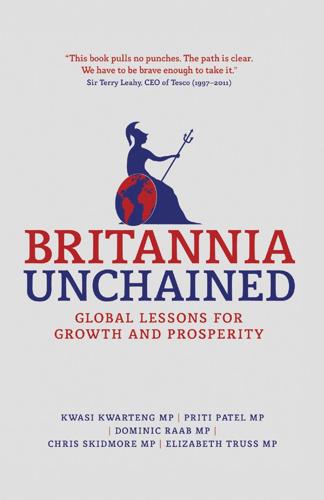
Britannia Unchained: Global Lessons for Growth and Prosperity
by
Kwasi Kwarteng
,
Priti Patel
,
Dominic Raab
,
Chris Skidmore
and
Elizabeth Truss
Published 12 Sep 2012
Over the course of Mulroney’s term from 1984 to 1993 debt grew from 46.9 per cent to 67 per cent of GDP.10 At one point, 36 per cent of the taxes of the citizens in Ottawa was going towards paying off the national debt.11 Even worse, the higher interest rates were slowing the economy, making it still harder to pay off the debt. The situation was clearly getting out of control. The 1994 Mexican Peso Crisis had shown how quickly international investors could lose faith in a country. Unless Canada acted soon, it too faced the danger of the vicious cycle of falling investor confidence, increased debt and economic stagnation. By 1995 Canada’s federal debt was 68.4 per cent of GDP. On top of this, it also faced provincial debt of 27.6 per cent of GDP.12 As a whole, the Canadians’ debt had passed an ominous 90 per cent of GDP.

Capitalism in America: A History
by
Adrian Wooldridge
and
Alan Greenspan
Published 15 Oct 2018
Women’s rising employment was also made possible by rises in the productivity of other areas of the economy: it reflected the fact that it was easier to clean house or go shopping. “WE ARE FORTUNATE TO BE ALIVE AT THIS MOMENT IN HISTORY” There were plenty of clouds on the horizon as the twentieth century drew to a close. The financial system was much more fragile than it appeared. Globalization was much more crisis prone: the Mexican peso crisis of 1994 was followed by the Asian crisis of 1997. Some of the positives of the era were balanced by negatives. The advance of educated women coincided with a retreat for blue-collar men. In 2000, only 67 percent of males fifty-five to sixty-four years of age were in the labor force, compared with 87 percent in 1950.
…
D., 148–49 logistics, 292–93 London Underground, 94 Long, Huey, 204, 245–46 Longworth, Alice Roosevelt, 182 Louisiana Purchase, 5, 35, 40, 42, 66–67 Louisiana State University, 246 Lowell, Francis Cabot, 36, 71 Lubell, Samuel, 248 Lynd, Robert and Helen, 11–12, 197 McCallum, Daniel, 137–38 McCormick, Cyrus, 15, 46–47, 72–73, 118 McDonald’s, 293, 390, 394, 428, 443 McDougall, Walter, 45 Macfarlane, Alan, 5–6 McGowan, William, 341 McKenzie, Frederick Arthur, 311 McKinley, William, 152, 159, 168, 181, 427–28 McKinsey, James, 264 McKinsey & Company, 317–18 McLean, Malcolm, 292–93 McNamara, Robert, 34, 212 McPherson, James, 41 Macy, Rowland Hussey, 3, 24, 140, 439 Maddison, Angus, 6 Madison, James, 65, 67–68, 157 Magna Carta, 69 mail-order catalogues, 140–42 Malthus, Thomas, 44, 300 management buyouts (MBOs), 341 management consultants, 264 management methods, 137–38, 209–12, 317–21 management science, 290–93 managerial capitalism, 287–90, 338 Mann, Horace, 73 manufacturing, 63, 65, 80, 94, 280, 280–81, 323, 359–60, 371 Marconi, Guglielmo, 203 Marden, Orison Swett, 165 Margo, Robert, 295 Markowitz, Harry, 383 Marshall, John, 66 Marshall Plan, 278–79 Martin, William McChesney, 304 Martineau, Harriet, 45 Marx, Karl, 9, 361 Mason, George, 64 Mason, John Landis, 120 Mason jar, 120 Massachusetts Bank, 32 Massachusetts Bay Company, 8, 134 Massachusetts State Board of Education, 73 mass production, 15–16, 72, 146–47, 194–95, 271–72, 314 Meacham, Jon, 66 Means, Gardiner, 206–7 Meckling, William, 337 Medicaid, 303–4, 404, 405 Medicare, 303–4, 372, 404–8, 442–43 Mellon, Andrew, 190, 237–38, 259 Meltzer, Allan, 242 Melville, Herman, 393 Mencken, H. L., 153, 189, 190, 195–96, 251 merger wave of 1895 to 1905, 142–45 Merton, Robert, 383 Metro-Goldwyn-Mayer, 264 Mexican-American War, 5, 266 Mexican peso crisis of 1994, 366 Mexico, trade, 344, 346–47, 370, 370–71 Meyer, Eugene, 242 Microsoft, 323, 333, 354, 355, 360, 390–91 military-industrial complex, 283, 285, 349–50 Milken, Michael, 334, 338, 341–42 minimum wage, 163, 194, 244, 302, 424 Minneapolis Grain Exchange, 120 Mississippi River, 36, 52 MIT (Massachusetts Institute of Technology), 283, 284 Mitchell, George, 11, 357–59 Mitchell, Wesley Clair, 237 Moley, Raymond, 240–41, 260 Mondale, Walter, 326 monopolies, 109–10, 132 Monroe, James, 35, 67, 248 Montesquieu, 33 Moore, Gordon, 351, 353 Moore’s law, 19, 351 Moretti, Enrico, 393 Morgan, John Pierpont “J.
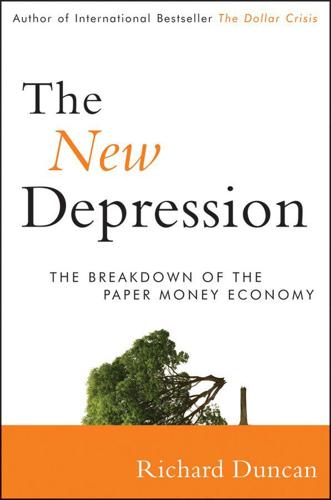
The New Depression: The Breakdown of the Paper Money Economy
by
Richard Duncan
Published 2 Apr 2012
Factories are closed, the continuation of construction projects in progress is halted, workers are discharged.6 That was true not only in the Great Depression, but also in all the severe economic crises that have broken out during the decades following the collapse of Bretton Woods: the Latin American debt crisis of the early 1980s, the Japanese crisis that began in 1990, the Mexican peso crisis of 1994, the Asian crisis of 1997, and the Russian crisis of 1998. When the credit stopped expanding, the depression began. The current crisis in the United States is no different; when credit ceased to expand, the depression began. This depression, however, has not been allowed to run its course.
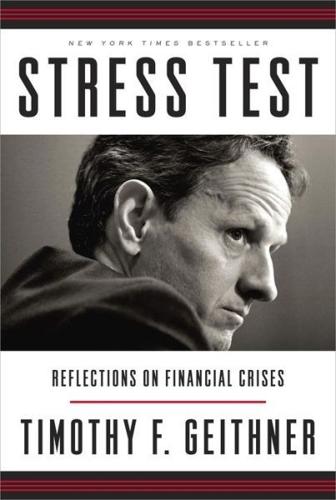
Stress Test: Reflections on Financial Crises
by
Timothy F. Geithner
Published 11 May 2014
It was a scary but relatively painless way to learn about making judgments under the pressure of a crisis, about weighing the relative merits of various choices with potentially catastrophic outcomes. JUST OVER a decade later, I was sitting next to Secretary Rubin in the back of his government car, returning from Capitol Hill during a different kind of crisis. The secretary had just testified before the House Banking Committee about the Mexican peso crisis, often described as the first financial crisis of the twenty-first century. Mexico was on the brink of defaulting on its obligations, and Rubin had made the case for a $40 billion emergency loan. The reaction was withering. With public opinion running 80–20 against a U.S. government rescue, Republicans and Democrats accused the secretary of plotting to waste tax dollars on foreigners, bail out his Wall Street pals who had speculated in Mexico, and even line his own pockets.
…
At an early stage in our internal discussions, Mark Sobel, a veteran Treasury civil servant who held my old international job, and the Fed crisis maven Ted Truman, whom I had recruited to Treasury to help oversee our international efforts, proposed that we should push to expand the IMF emergency fund that we helped create after the Mexican peso crisis. Sobel suggested we try to increase its financing from $50 billion to $300 billion, to make sure it had enough firepower to support countries in trouble. “Let’s do five hundred billion,” I said. The magnitude of the collapse had been huge, and there was no point in undershooting. Just like that, we decided to propose $500 billion.
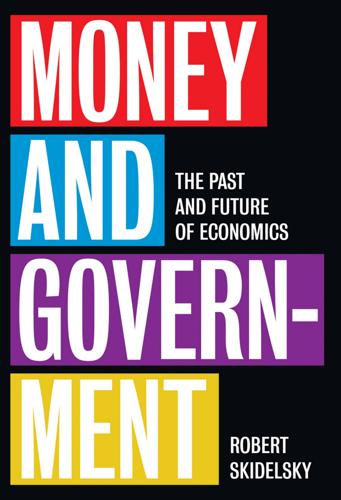
Money and Government: The Past and Future of Economics
by
Robert Skidelsky
Published 13 Nov 2018
H y p e r- gl oba l i z at ion a n d i t s Disc on t e n t s In the early 1990s it was usual to say that the world economy was ‘reglobalizing’, or returning to its pre-1914 condition after a seventy-year protectionist detour. Three developments have shattered this optimistic prognosis. The first was the unexpected financial meltdown in East Asia in 1997–8, which, following the Mexican peso crisis of 1995, highlighted the instability of global financial markets and the inadequacy of the world’s financial architecture. Second, were the mass protests in Geneva in 1998 and Seattle in 1999 against the setting up of the World Trade Organization (WTO). These marked the start of a popular insurrection against globalization.
…
Macmillan Committee hearings, 114–17 ‘marginal efficiency of capital’ (MEC), 119 ‘monetary theory of production’, 22–3 on ‘money multiplier’, 259 on nationalist economics, 95 and ‘natural’ rate of interest, 69, 201, 278, 311 and ‘natural’ rate of unemployment, 197 on possession of money, 1, 25, 36, 115, 119, 121, 385 on psychology of investment, 119–21, 199, 286–7 and ‘quantity adjustment’, 98, 118 and quantity theory, 61, 102–3, 125 saving and investment relationship, 118–21, 172, 339, 342–3, 386 on unemployment, 114, 121–2 view of State in future (1936), 354 and Wall Street Crash, 104, 105 ‘Economic Possibilities for our Grandchildren’, 369 General Theory (1936), 9, 11, 117–27, 128–9, 137, 173, 194, 235, 296–7, 386–7 Tract on Monetary Reform (1923), 99, 101, 125 Treatise on Money (1930), 102, 125, 259, 279, 280 Keynesian economics and 2008 crash, 219, 223–4, 241–2, 244–5 anti-Keynesian counterattack see counter-orthodoxy to Keynesianism ‘automatic stabilizers’, 142, 143–4, 219, 237 and capital-labour balance of power, 7, 130–31, 147, 169–70, 478 i n de x and monetary policy, 98, 100–101, 114–15, 116, 124–5, 137, 138–9, 145–6, 173 neo-classical synthesis, 172, 173–4, 201–2 as not rehabilitated post-crash, 2–3, 348 onset of stagflation (1965–9), 164 political-economy gap in, 128–9 and post-war ‘catch-up’, 158–9 and post-war employment policy, 368, 370–71 post-war settlement, 139–41 and quantitative easing (QE), 259, 261, 269–70, 271 as response to Great Depression, 13, 15–16, 98, 114–15, 118 right/left political implications of, 138–41, 142 short-run ‘sticky’ wages/prices, 122, 132, 138, 171, 173, 174, 195 social context of rise of, 130–31 and social democratic state, 16, 149, 176, 198, 292, 293, 303–4, 348, 374 stabilization theory , 128, 133, 143–4, 180, 183, 219, 237, 278, 350 ‘stagflation’ in 1970s, 2–3, 9, 16, 152, 154, 162–70, 163, 183, 184, 189, 189–90, 304 and strength of post-war boom, 154, 154–62 theoretical abolition of, 201 and uncertainty, 25, 36, 101, 119–24, 172, 180, 196–7, 199, 352–3, 385, 387 ‘underemployment equilibrium’, 1–2, 118, 128, 130–31, 233, |293, 352 and wages problem under full employment, 131, 141, 144, 147–8, 161, 162, 169–70, 171, 304, 348 widespread diffusion of, 139–41 see also New Keynesianism KfW (German Development Bank), 354 Kiel Canal, 89 Kindleberger, Charles, 58–9 King, Martin Luther, 149 King, Mervyn, 53, 187, 254, 311, 331 Knapp, Georg Friedrich, 25 Kondratiev cycle, 14, 350 Konrad Zweig, 157 Kornai, Janos, 357 Krugman, Paul, 106, 117, 119, 225, 255*, 370, 378 Kuroda, Haruhiko, 271 Kuznets, Simon, 302 labour market and automation, 370–71 classical wage-flexibility, 107, 108, 115, 121–2, 123, 128, 130, 132, 172 employer-union bargains, 147, 167 Friedman’s view of, 180–81 full-employment, 1, 10, 15–16, 131, 144, 147–8, 169, 195, 236, 303, 352 hysteresis in, 240, 240, 241 Kaldor’s supply side policies, 150–51, 190 low waged workers from developing world, 252–3, 300, 379 and New Consensus, 202 in new macroeconomic constitution, 355 off-shoring of millions of jobs, 17 post-crash decline in productivity, 305–6 479 i n de x labour market – (cont.) post-W W1 wage structures, 95, 100, 108, 115 and RBC theory, 195, 211 since Great Recession, 245, 305–6 stagnation of real earnings, 4, 32, 122, 245, 303, 340, 367 in tributary economies, 26 ‘underemployment equilibrium’, 1–2, 118, 128, 130–31, 233, 293, 352 wage and price controls (1960s/70s), 16, 147, 151, 152, 153, 167–8 wage-price spirals (from late 1960s), 164, 165–8 Labour Party, 147, 152, 169–70, 188, 222 and 2008 crash, 223–4, 225–6, 227, 238–9 fiscal policy (1997–2010), 221–4, 223, 225–6, 227 minority government (1929–31), 111–12, 142 National Plan (1965), 150 public service provision (after 1997), 197 renationalization proposals, 356 Selective Employment tax (1966), 151 Laffer, Arthur, 191 Laidler, David, 98, 106, 187 Latin America, 57, 59, 92, 139, 319 Lawson, Nigel, 185, 192–3, 222, 358 Leeson, Nick, 366 Leffingwell, Russell, 160 Lehman Brothers bankruptcy (15 September 2008), 3, 50, 217, 365 Leigh, Daniel, 230–31 Leijonhufvud, Axel, 60, 68, 69–70 Lenin, 57, 294, 295 Leontief, Wassily, 371 leverage concept, 317–18, 322 Liikanen Report, 362 limited liability, 31 Lindbeck, Assar, 198 Lippmann, Walter, 174–5 liquidity concept, 316–17 liquidity trap concept, 254–6, 255 List, Friedrich, xviii, 88–9, 90, 378 Lloyd George, David, 87, 107–8, 113 ‘pledge’ (1929), 109–10, 111, 116 local authorities, 108–9, 155–6 Locke, John, 35, 41–2, 43, 44, 80 Lowe, A., 130 Lowndes, William, 41 LTROs (long-term refinancing operations), 257 Lucas, Robert, 194–5, 202–3, 208–11, 292 Lukes, Steven, 13 Luttwak, Edward, 299 Luxemburg, Rosa, 293, 295 Maastricht Treaty (1992), 198 MacDonald, Ramsay, 112 Macmillan Committee on Finance and Industry (1930), 114–17 macroeconomics contrast to natural sciences, 8, 10, 201 and distribution, 293–305 efforts to remove from economics, 386 Keynes introduces concept of, 75, 124, 129 need for inserting society into, 386–90 and REH, 194–5 Say’s Law, 19–20, 36, 96, 110, 190, 293–4 short-run and long-run effects, 14, 38, 48–9, 64, 282, 385 Wicksell’s circular flow, 67–70, 68 see also entries for individual economists, theories and policies 480 i n de x Macron, Emmanuel, 372 Malthus, Thomas, 48–9, 293, 385 ‘Manchester system’, xviii, 122–3 marginal productivity theory, 63, 295 marginal propensity to consume, 118, 125, 133, 272, 297 marginalist revolution (late nineteenth century), 288, 290–91 mark-to-market (M2M) framework, 314 Marshall, Alfred, 63, 64, 65 Marshall Aid, 159, 332 Marshall-Lerner condition, 251* Martin, Felix, 27 Marx, Karl, xviii, 6, 130, 288, 386 labour theory of value, 296 and production of ideas, 12, 14 and under-consumption theory, 293, 296 Marxism, 128–9, 130, 140, 304, 350 and business class, 7, 130 explanations of Great Depression, 298 Masch, Vladimir, 381 Matthews, Robin, 155 Maudling, Reginald, 150, 152 May, Theresa, 248 Mazzucato, Mariana, 353, 354 media, 7, 13 mercantilism, 9, 28, 36–7, 74, 75–6, 77–81, 82, 84–5, 93 developing countries in twentiethcentury, 90 export surpluses in present-day, 380 German Historical School, 88–9 Merkel, Angela, 29, 236 Mesopotamian empire, 26 Methuen Treaty (1703), 78 Mexican peso crisis (1995), 371 microeconomics, 75, 174, 192, 384, 386 of distribution, 290–92 and DSGE modelling, 211 and Friedman, 177, 180 limitations of, 387 and New Consensus, 199, 201 radicalization of by Conservatives, 197 of Walras, 10, 173, 181, 385 Middle East, 331, 333, 337 Middleton, Roger, 114 migration, 15, 56, 58, 383 Miles, David, 265 Mill, John Stuart, 21, 369 Essays on Some Unsettled Questions of Political Economy (1844), 19–20, 36, 84 Miller, Marcus, 239 Mills, Terence, 111 Minford, Patrick, 187 Minsky, Hyman, 216, 313 monetarism, 9, 177–84 abandonment of, 184–5, 186, 188 American and British-styles of, 185 and Congdon, 279–85 experiment in (1976–85), 184–90, 189, 270–71 fiscal legacy, 190–93 illusion of self-financing tax cuts, 191–2 policy failure of, 184–5, 186, 187–8, 249 monetary policy and 2008 crash, 10–11, 104, 105, 106, 116, 129, 221, 278–9 bimetallist controversy, 44, 50–52 British recoinage debate (1690s), 40, 41–3 bullionist vs ‘real bills’ controversy, 44, 45–9 Competition and Credit Control Act (1971), 168 and control of inflation, 181–2, 185, 186–7, 189, 190, 193, 201 creditors and debtors, 29–32, 37, 39, 47 481 i n de x monetary policy – (cont.)
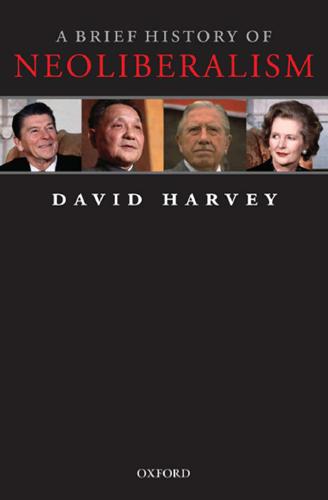
A Brief History of Neoliberalism
by
David Harvey
Published 2 Jan 1995
The preparedness to intervene in currency markets by agreements such as the Plaza Accord of 1985, which artificially lowered the dollar against the Japanese yen, followed shortly thereafter by the Reverse Plaza Accord, which sought to rescue Japan from its depressed state in the 1990s, were instances of orchestrated interventions attempting to stabilize global financial markets.6 Financial crises were both endemic and contagious. The debt crisis of the 1980s was not limited to Mexico but had global manifestations (see Figure 4.2).7 And in the 1990s there were two sets of interrelated financial crises that yielded a negative trace of uneven neoliberalization. The ‘tequila crisis’ that hit Mexico in 1995, for example, spread almost immediately, with devastating effects on Brazil and Argentina. But its reverberations were also felt to some degree in Chile, the Philippines, Thailand, and Poland. Why, exactly, this particular pattern of contagion occurred is hard to explain because speculative movements and expectations in financial markets do not necessarily rely on hard facts.
…
Resistance to the ejido reform was, however, widespread, and several peasant groups supported the Zapatista rebellion that broke out in Chiapas in 1994.19 Figure 4.3 Employment in the major maquila sectors in Mexico in 2000 Source: Dicken, Global Shift. Having signed on to what became known as the Brady Plan for partial debt forgiveness in 1989, Mexico had to swallow, mainly voluntarily as it turned out, the IMF’s poison pill of deeper neoliberalization. The result was the ‘tequila crisis’ of 1995, sparked, as had happened in 1982, by the US Federal Reserve raising interest rates. This put speculative pressure on the peso, which was devalued. The trouble was that Mexico had earlier taken to issuing dollar-denominated debt (called tesobonos) to encourage foreign investment, and after the devaluation could not mobilize enough dollars to pay them off.
…
Menem opened the country to foreign trade and capital flows, introduced greater flexibility into labour markets, privatized state-owned companies and social security, and pegged the peso to the dollar in order to bring inflation under control and provide security for foreign investors. Unemployment rose, putting a downward pressure on wages, while the elite used privatization to amass new fortunes. Money flooded into the country and it boomed from 1992 until the ‘tequila crisis’ spilled over from Mexico: Within weeks, the Argentine banking system lost 18 per cent of its deposits. The economy that had grown at an average annual rate of 8 per cent from the second half of 1990 to the second half of 1994 fell into a steep recession. Gross domestic product contracted by 7.6 per cent from the last quarter of 1994 to the first quarter of 1996… the government’s interest burden increased by more than 50 per cent from 1994 to 1996.
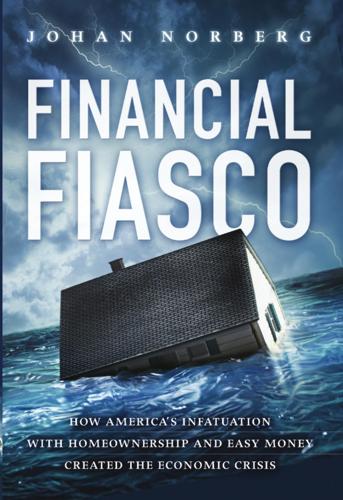
Financial Fiasco: How America's Infatuation With Homeownership and Easy Money Created the Economic Crisis
by
Johan Norberg
Published 14 Sep 2009
The market stabilized very quickly, and the ink of the magazines warning of a repeat of the Great Depression had hardly dried before the economy had shaken off the stock market crash and was back on track. A hero had been born. With Greenspan at the helm, the Fed used the same modus operandi whenever crisis loomed: quickly cut the benchmark rate and pump liquidity into the economy. That is what it did at the time of the Gulf War, the Mexican peso crisis, the Asian crisis, the collapse of the Long-Term Capital Management hedge fund, the worries about the millennium bug, and the dot-com crash-and on each occasion, commentators were surprised by the mildness of the subsequent downturn. In someone with Greenspan's clear-cut opinions about the importance of free markets, this readiness to throw money at all problems was surprising.
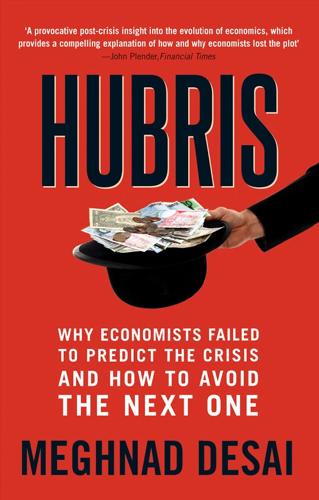
Hubris: Why Economists Failed to Predict the Crisis and How to Avoid the Next One
by
Meghnad Desai
Published 15 Feb 2015
It was eventually resolved by creditors accepting cancellation of debt and the debtor countries selling some of their natural resources in lieu of repayment of the principal. Mexico was thought to have restored financial prudence and fixed its exchange rates after it had recovered from its debt problem. But in 1994, Mexico was hit by the Mexican peso crisis. Investors from across the world had bought Mexican bonds – the tesebonos. But political turmoil in the Chiapas region led to a panicked withdrawal of capital and a collapse of the peso. The IMF arranged a large loan to help Mexico overcome the shock of the sudden collapse of the currency. This remained a local issue and did not spread beyond Mexico to the US.
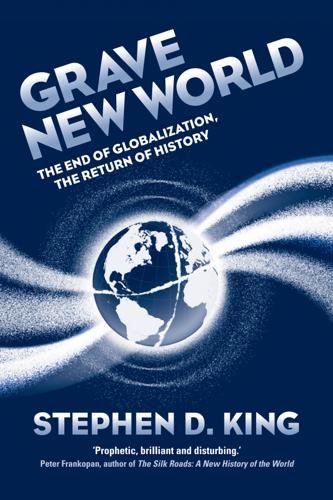
Grave New World: The End of Globalization, the Return of History
by
Stephen D. King
Published 22 May 2017
Argentina, however, was an exception (alongside Venezuela, albeit from a rather different political perspective). Other large Latin American economies were keen to get a slice of the free-market action. Mexico signed up to the North American Free Trade Agreement on 1 January 1994. Although unfortunately timed – Mexico suffered its so-called ‘tequila crisis’ that year – its deal with the US and Canada underscored its enthusiasm for free-market values. Brazil, meanwhile, successfully managed to get a grip on inflation – thanks, in part, to the introduction of the so-called ‘Real plan’ in the mid-1990s. Standing at almost 3,000 per cent in 1990 and 2,000 per cent in 1994, Brazilian inflation badly needed to come down.
…
To be taken seriously by international investors, policymakers in the emerging nations often chose to tie their currencies to US dollars, DM or, more recently, euros: by doing so, they hoped to demonstrate their commitment to monetary stability, even if their domestic financial arrangements appeared to be, at times, rather opaque. Unfortunately, this approach often didn’t work: the apparent guarantee of stability typically encouraged excessive capital inflows, domestic credit booms, unproductive investments and a subsequent rush for the exit. Think, for example, of the Mexican tequila crisis in the mid-1990s, the Asian crisis shortly thereafter, the 1998 Russian debt default, the collapse of Argentina’s currency board at the turn of the century and, most obviously, the global financial crisis. Given these experiences, an increasing number of emerging nations began to reject currency peg arrangements as a way of advertising their financial probity.
…
(i) Jolie, Angelina (i) Jordan (country) (i) Joyce, James (i) Juncker, Jean-Claude (i) Juncker Plan (i), (ii)n3 Junts pel Sí (i) Kaczińsky, Jarosław (i) Kaduna (i) Karbala, Battle of (i) Kazakhstan (i), (ii) Kennan, George (i) Keynes, John Maynard ‘animal spirits’ (i) bancor (i), (ii), (iii) Churchill and (i) demand management (i), (ii) IMF and (i) on fashion (i) on gold (i) ‘paradox of thrift’ (i) unemployment, inflation and (i) Kim, Dr Jim Yong (i) King, Mervyn (i)n12 Kirchner, Cristina Fernández de (i) Kirchner, Néstor (i) Kosmos (i) Korean War (i), (ii) Kunming (i) Kurds (i) Kuril Islands (i) Kuwait (i) Kyrgyzstan (i) Labour Party (UK) (i), (ii), (iii), (iv) Lagarde, Christine (i) Lagos (i) Latin America (i) balance of payments deficits (i) bringing inflation to heel (i) debt crises (i) immigrants enter US (i) income of (i) Law and Justice party (Poland) (i) Le Pen, Marine (i) League of Nations (i), (ii), (iii) Lebanon (i) Lee Kuan Yew (i) Lehman Brothers (i) Lenin, Vladimir Ilyich (i), (ii) Leopold II, King (Belgium) (i), (ii)n6 Leviathan (Thomas Hobbes) (i) Lewis, Arthur (i) Lewis Model (i) liberal democracy (i), (ii), (iii), (iv) Liberia (i) Libya (i), (ii) Lima (i) Lion King, The (Disney) (i) Lithuania (i) living standards Brazil (i) Italy (i) Mexico (i) New Zealand (i) Northern Europe and US (i) post-Second World War, industrialized countries (i) Soviet Union (i) under threat (i) US (i), (ii) various (i), (ii) West and parts of Asia (i) Western and Eastern Europe (i) Western Europe (i) Livingstone, David (i) Locke, John (i) London banker to the world (i) BBC Two and the power cut (i) clubs (i) financial centres (i) living standards (i) squalor to comfort in (i) London School of Economics (i) Long Term Capital Management (i) Long Term Credit Bank of Japan (i) Louvre (i) Love Thy Neighbour (i) Lucas, Robert (i) Luxembourg (i), (ii) Lydon, John (Johnny Rotten) (i) Maastricht Treaty (i), (ii) Macau (i), (ii) macroeconomics (i) Madagascar (i) Madrid (i) Magic Mountain, The (Thomas Mann) (i) malaria (i), (ii) Malaysia (i), (ii), (iii) Mali (i) Manchester Guardian (i) Manchuria (i), (ii) Manila (i) Mann, Katja (i) Mann, Thomas (i) Mansa Musa (i) Mao Zedong (i), (ii), (iii) Marshall, George (i), (ii) Marshall Plan (i), (ii), (iii), (iv) Marston Valley Brick Company (i), (ii) Marx, Karl (i), (ii), (iii), (iv), (v) Mary II, Queen (i) Massachusetts (i) Maxwell, Robert (i) May, Theresa (i) Mazzini, Giuseppe (i) McCarthy, Joe (i) McCloskey, Deirdre (i) Mecca (i) Mediterranean (i), (ii), (iii) Medvedev, Dmitry (i) Meiji Restoration (i), (ii) mercantilism (i) Mercia (i) Merkel, Angela (i), (ii) Mesopotamia (i) Mexico immigration into America (i) North American Free Trade Association (i), (ii) per capita incomes (i) tequila crisis (i) TPP (i) Trump and (i), (ii), (iii) US border (i) Mian, Atif (i) Microsoft (i) Middle East China’s trade routes (i) failure of liberal democracy (i), (ii) Islam on march (i) US failure to deliver peace (i) US inconsistency (i) US no longer reliant on (i) Milanović, Branko (i) military spending (i), (ii) Millennium Development Goal (i) Miller, Robert (i) Ming Dynasty (i) Minsky, Hyman (i), (ii), (iii)n12 Miss World (i) Mississippi (state) (i) Mitterrand, François (i), (ii) Mogadishu (i) Mohammad, Prophet (i), (ii), (iii) see also Islam Mohammad Mossadeq (i) Mohammad Reza Shah (i) Molotov–Ribbentrop Pact (i) Mombasa (i) Monaco (i) monetarism (i) Mongols (i), (ii), (iii) Montesquieu (i), (ii), (iii) Moore’s Law (i) Moors (i), (ii) Morgenthau, Hans (i), (ii), (iii), (iv)n1 Morsi, Mohammad (i) Moscow (i) Moscow Olympics (i) Mosul (i) ‘Moving to Opportunity’ (US Department of Housing and Urban Development) (i) Mubarak, Hosni (i) Mulan (Disney) (i) Mumbai (i) Muslim Brotherhood (i) Muslims see also Islam Constantinople falls (i) Nigerian clashes (i) Poland and (i) Trump and (i), (ii) UK immigrants (i) Mussolini, Benito (i) Myanmar (i) Nader Shah (i) Napoleonic Wars (i), (ii), (iii), (iv), (v) Nasser, Gamal Abdel (i) nation states (i) decision-making (i) economic logic and (i) ethnic and cultural tensions (i) EU differs from (i) Eurozone (i) globalization and (i), (ii), (iii), (iv) Mazzini on (i) Ottoman Empire (i) them and us (i) National Endowment for Democracy (i) National Health Service (NHS) (i) Native Americans (i) NATO (North Atlantic Treaty) (i), (ii), (iii), (iv) Nazis (i) Nelson, Admiral Lord (i) Netflix (i) Netherlands (i), (ii) New York (i), (ii), (iii), (iv), (v) New York Times (i) New Zealand (i), (ii), (iii) Nice (i) Nicholas II, Tsar (i) Nietzsche, Friedrich (i) Nigeria (i) Nile, River (i) Nineteen Eighty-Four (George Orwell) (i) Nixon, Richard (i) Nixon Shock (i), (ii), (iii) North Africa African trade (i) freedom statistics for (i) Islam reaches (i), (ii) liberal democracy absent (i), (ii) North American Free Trade Agreement (i), (ii) North Korea (i), (ii) Northern Ireland (i), (ii) Norway (i) Nye, Joseph (i) Obama, Barack Asian Infrastructure Investment Bank and (i) Duterte’s insult (i) Merkel and (i) ‘pivot to Asia’ (i), (ii), (iii) rejected for Trump (i) TPP (i) Oborne, Peter (i)n6 OECC (Organisation for European Economic Co-operation) (i), (ii) OECD (Organisation for Economic Co-operation and Development) (i), (ii), (iii)n18 Offa (i) Office of the US Trade Representative (i), (ii) oil 1970s (i) Iran threatens to nationalise (i) price collapses (i), (ii) US and Middle East (i) Oman (i) Oosterbeek (i) Open University (i) Orwell, George (i) Osman I (Ottomans) (i) Ottoman Empire (i) Constantinople falls (i) Crimean War (i) crumbles (i) Egypt in (i) First World War (i) independence from (i) origins of (i) Persia pushes back (i) Pacific (i), (ii), (iii), (iv) see also Trans-Pacific Partnership (TPP) PACOM (US Pacific Command) (i) Pakistan (i), (ii), (iii) Palestinian Authority (i) Pamir Mountains (i) Paracel Islands (i) Paranoid Style (i) Paris (i), (ii), (iii) Paris, Treaty of (1951) (i) Paris climate deal 2015 (i) Party for Freedom (Netherlands) (i) Pearl Harbor (i) per capita incomes China and India (i) China and US (i) Eastern Europe (i) Italy (i) Mexico (i) Nigeria (i) Northern Europe and US (i) Poland (i) UK (i) Ukraine (i) US (i), (ii) various (i) Permanent Court of Arbitration (The Hague) (i) Perón, Juan (i) Persia (i), (ii), (iii), (iv) see also Iran Peru (i) Peter the Great (i) petrodollar (i) see also dollar (US) Pew Research Center (i) Philadelphia (i) Philippines (i), (ii), (iii), (iv) Phytophthora infestans (potato blight) (i) Piketty, Thomas (i) Plaza Accord (i), (ii) Podemos (i) Poland a train route through (i) Coca-Cola (i) Germany post First World War and (i) post fall of Berlin Wall (i) Second Gulf War (i) Western Europe and (i) politicians (i) Poltava, Battle of (i) population ageing (i), (ii), (iii), (iv) population statistics (i) Africa (i) Black Death (i) China (i) EU (i) immigrants in New World (i) India (i) Ireland (i) Syria (i) United States (i), (ii) various (i) populism (i), (ii), (iii), (iv) Port Harcourt (i) Portugal (i), (ii), (iii), (iv) potatoes (i) Powell, Enoch (i) Pratas Islands (i) Princip, Gavrilo (i) Private Eye (i) protectionism (i), (ii), (iii), (iv), (v) Protestants (i) Prussia (i) Putin, Vladimir (i), (ii), (iii), (iv), (v) Al Qaeda (i), (ii)n2 Qing dynasty (i), (ii) quantitative easing (i), (ii), (iii), (iv), (v) Quran (i) Radicals (British political party) (i) railways (i), (ii), (iii) Raj (i) Randall, Alan (i) RBS (i) Reagan, Ronald (i), (ii), (iii), (iv), (v) Red Army (i) Red Feed (i) Reformation (i) refugees (i), (ii), (iii), (iv), (v), (vi) see also asylum seekers; immigration Regional Anti-Terrorist Structure (RATS) (i) Regional Comprehensive Economic Partnership (RCEP) (i), (ii) regulators (i) Reith, Lord (i) Remainers (i) Renesas Electronics (i) Republican Party (US) (i), (ii) Reputation Institute (i) reserve currencies competition for (i) Triffin Dilemma (i) US dollar (i), (ii), (iii), (iv) Revolutionary War (US) (i) Ricardo, David (i), (ii), (iii), (iv)n10 rich, the (i) rising sea levels (i) Robinson, James A.

The Crisis of Crowding: Quant Copycats, Ugly Models, and the New Crash Normal
by
Ludwig B. Chincarini
Published 29 Jul 2012
When markets crash, Brazilian debt behaves more like equity than fixed income and usually crashes very fast. Latin American countries have frequently defaulted on their debt, causing large losses on these bonds. For example, after Mexico devalued its currency in December 1994—the so-called Mexican Peso crisis—Brazilian C bonds dropped by 50%.) LTCM also bought Russian government bonds denominated in Euros. Emerging economies had a history of devaluing their currencies. Debt payable in dollars or Euros was thought to be more secure—if, of course, the country didn’t default altogether. LTCM’s direct exposure to Russia, Brazil, and other countries was a small part of its portfolio and was not the principal reason for its troubles.
…
This is computed by comparing the prices of Greek goods, adjusted for the exchange rate, against 36 other countries. See Eurostat. 9. On the day of the announcement it was revised to 12.7%, but later bumped up again. 10. See Avdjiev et al. (2010). 11. MF Global, for example. 12. The late Rudi Dornbusch, MIT’s famous international economist, said this to a group at MIT after the Mexican Peso crisis, when interest rates were very high and people were considering investing. 13.Helenic Republic Press Release. 14. Even these numbers must be treated cautiously, because much Greek data is suspect. 15.The Greek people voted heavily for the anti-austerity party in the May 6, 2012 elections.
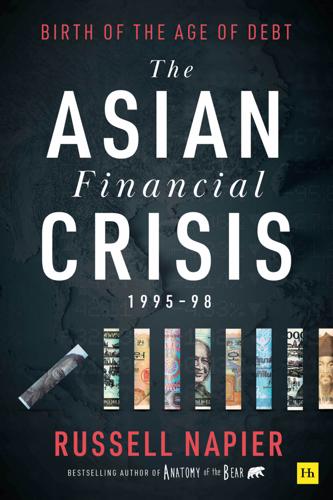
The Asian Financial Crisis 1995–98: Birth of the Age of Debt
by
Russell Napier
Published 19 Jul 2021
Robert Rubin, In an Uncertain World: Tough Choices from Wall Street to Washington, 2003 As a front-line participant in emerging market investment in 1995, it was very clear that the intervention had indeed created a greater appetite for emerging market investment. The Asian currencies had come under downward pressure during the so-called tequila crisis, but the bailout programme had ended that pressure. The relative stability of the Asian currencies through the tequila crisis went a long way to convincing investors that the Asian currencies would not fall against the US dollar. Even if they did, investors had decided that the United States and the IMF were clearly on hand to make sure that foreign investors would not lose money in such a situation.
…
When a fixed variable in an equation is removed, never underestimate the ability of any human being to simply continue to act on the basis that it is still there. My attempt to label the Asian crisis as the Mekong crisis failed. It was not a name chosen to reflect the name of that long river that forms a large part of the Thai border. It was a name that reflected the tequila crisis, the name for the Mexican crisis of 1994, but this time it was the epithet of the Mekhong whisky brand of Thailand. I can only guess that not enough people had sampled its delights to endorse the comparison. Musical chairs 15 September 1997, New Asia The focus is now on the Asian foreign currency debt binge.
…
Cynics would say that such a hit to foreign commercial bankers would be the death-knell for Asia’s future, as access to loans would dry up. Such cynics ignore the fact that the BIS banks increased their lending to Latin America by US$8bn from 1995 to 1996 and by US$22bn the next year, despite the losses associated with the tequila crisis. Such cynics ignore the fact that bankers are practised at lending to newly capitalised physical assets. Donald Trump still has bankers and some of the physical assets of Adsteam are now recapitalised and considered blue-chip clients by Aussie bankers. Anyway, next time around, bankers will not be lending to AYZ Co of Thailand or even to the Thai government, but to a subsidiary or associate of ABC Multinational Corporation.
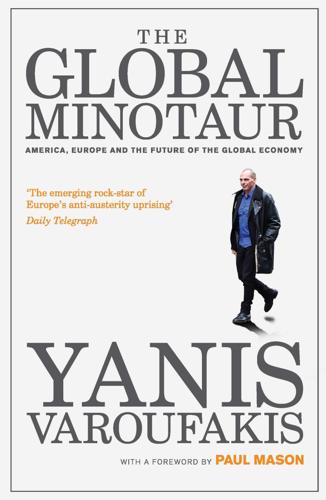
The Global Minotaur
by
Yanis Varoufakis
and
Paul Mason
Published 4 Jul 2015
And it was not just the induced crisis in Japan that contributed to the Minotaur’s rapid expansion. Financialization, coupled with repeated attempts to tie domestic currencies to the US dollar (the so-called dollar peg), led to a long chain of financial crises whose ultimate effect was a real economic meltdown in each link of the chain. The chain began in 1994 with the Mexican peso crisis, then moved to South East Asia (with the collapse of the Thai baht, the South Korean won and the Indonesian rupiah), proceeded to Russia and soon ended up back in Latin America (with Argentina being its most tragic victim). All these crises began with a large inflow of cheap foreign capital that led to bubbles in the real estate markets.

23 Things They Don't Tell You About Capitalism
by
Ha-Joon Chang
Published 1 Jan 2010
Economists are not some innocent technicians who did a decent job within the narrow confines of their expertise until they were collectively wrong-footed by a once-in-a-century disaster that no one could have predicted. Over the last three decades, economists played an important role in creating the conditions of the 2008 crisis (and dozens of smaller financial crises that came before it since the early 1980s, such as the 1982 Third World debt crisis, the 1995 Mexican peso crisis, the 1997 Asian crisis and the 1998 Russian crisis) by providing theoretical justifications for financial deregulation and the unrestrained pursuit of short-term profits. More broadly, they advanced theories that justified the policies that have led to slower growth, higher inequality, heightened job insecurity and more frequent financial crises that have dogged the world in the last three decades (see Things 2, 6, 13 and 21).

Irrational Exuberance: With a New Preface by the Author
by
Robert J. Shiller
Published 15 Feb 2000
F., 166, 257n19 Malaysia, 5 Managed capitalism, 112 Managerial revolutions, 113 Mandel, Michael, 112 Mandelbrot, Benoit, 244n22 Marcos, Ferdinand, 123 Marsh, Terry, 189, 261n26 Martin, William McChesney, 224 Massachusetts Investors Trust, 35 Master-charting, 106 Mean reversion, 129, 252n13 Media, 71–95, 118, 163, 203, 206, 208–9, 241n40, 245–48n1–24; attention cascades and, 79–82, 88; big price changes and absence of news, 78–79; bull market of 1990s INDEX and, 113; crash of 1929 and, 82–88; crash of 1987 and, 88–95; cultivation of debate by, 72–74; effect of significant world events on prices, 75–77; epidemics and, 160–62; expansion of business reporting, 19, 28–29; face-to-face communications versus, 154–57; market moves and, 72; market outlook and, 74–75; new era thinking and, 98; origins of, 245n1; peak of 1901 and, 100–101; psychological anchors and, 147; record overload and, 75; speculative bubbles and, 95; tag-along news and, 77–78 Mehra, Raj, 263n1 Mehta, Harshad (“Big Bull”), 127 Mehta Peak, 127 Meksi, Aleksander, 65 Meltzer, Allan, 84 Mergers, 106 Merrill Lynch, xv, 22 Merton, Robert, 189, 261n26 Mexican peso crisis, 128–29 Mexico, 5 Microsoft, 211, 212 Milestones for Dow, 137 Milgram, Stanley, 150–51, 256n4 Milgrom, Paul, 255n20 Millennium. See Turn-of-century optimism Millennium boom, 6 Miller, Merton, 184 Millionaire Next Door, The (Stanley and Danko), 50–51, 141–42 Mispricing: examples of obvious, 175–76; questioning examples of, 176–79; statistical evidence of, 179–80 Mitchell, Mark L., 248n21 Mitchell, Olivia, 265n15 Mitterrand, François, 128 Modigliani, Franco, 37 IN D E X Momentum, 236n11.
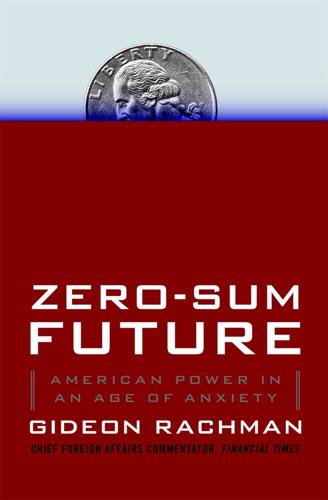
Zero-Sum Future: American Power in an Age of Anxiety
by
Gideon Rachman
Published 1 Feb 2011
By the end of the decade most countries had conquered hyperinflation and brought sanity to their government finances. The cutting of tariff barriers did spur trade. Countries like Brazil, Chile, and Mexico experienced export booms. Even as growth strengthened in the 1990s, however, it was still punctuated by financial crises. The “Tequila crisis” in Mexico in 1994 showed that the country was still prone to debt and currency disorders. It provoked a short but very deep recession and required emergency loans of billions of dollars from the United States. The emerging-market panic of 1998, which started in Russia, sparked another bout of capital flight in Latin America, mirroring the debt crisis of 1982 that had provoked the free-market reforms in the first place.
…
China as interest of, 25 Thatcher compared with, 25, 31, 36, 38, 39–43, 45 recession, 16, 32, 34, 40, 77, 149 see also Great Recession regulation, financial, 111–12, 113, 200–201, 220 Reid, Michael, 73, 78, 299n Republicans, 103, 108, 126, 157, 161, 242–43 resource shortages, 204–7, 262, 263, 272 “responsibility to protect” (R2P), 131, 230, 231 Rice, Susan, 197–98, 289 Rise and Fall of the Great Powers, The (Kennedy), 88 Road to Serfdom, The (Hayek), 118 Rogers, Mike, 266 Rohatyn, Felix, 111 Romania, 67, 68 Roosevelt, Franklin, 38, 282 Rubin, Robert, 112, 117–18 Rudd, Kevin, 218 Rumsfeld, Donald, 104, 125, 209 rupee, Indian, 83 Russia, 35, 59, 60, 96, 117, 165, 199, 240, 243, 255, 273, 274, 275, 290 antiglobalization in, 160 authoritarianism of, 174, 175, 176, 234–38, 240–41, 248, 249 in BRICs, 76–77, 196 democracy in, 130, 146, 168, 237–38, 283 financial crisis in (1998), 107–8, 159, 237 global government and, 217, 218, 223 global problems and, 205, 206, 280 NATO and, 235, 236, 312n–13n as nuclear power, 224, 287, 288 UN and, 225–26, 245 win-win world and, 129–30 Rwanda, 131, 132, 208, 231 Saakashvili, Mikheil (Misha), 233–35 Sachs, Jeffrey, 209, 213, 217 Sakharov, Andrei, 58 Salinas de Gortari, Carlos, 74, 116 Sarkozy, Nicolas, 2, 8, 191, 194, 219, 269–70 Saudi Arabia, 204, 217, 221, 241, 272 savings and loan scandal, 296n Schlesinger, James, 204 Schroeder, Gerhard, 115 Schuman Declaration (1950), 219 Scowcroft, Brent, 180–81, 305n Seattle, Wash., antiglobalization in, 155–56 Senate, U.S., 90, 222 Siberia, 240, 274 Sinatra Doctrine, 64–65 Singapore, 60, 137–40, 143, 213 Singh, Manmohan, 15, 54, 79–83, 102–3, 116, 225, 243 Single European Act (1986), 49–51 Smith, Adam, 2, 17, 82, 113, 192 Smoot-Hawley tariffs, 267 socialism, 15–16, 30, 64, 81 British, 35, 36, 38, 49 in France, 46–49 Solana, Javier, 151 Solidarity, 66, 67 Somalia, 132, 209, 210, 256–57, 273 South Africa, 69–70, 176, 193, 244–45, 246, 262 South Korea, 6, 18, 60, 82, 142, 143, 159, 186, 187, 195, 273 sovereign wealth funds (SWFs), 193, 247 Soviet bloc, 6, 102 collapse of, 17, 18, 35–36, 58–59, 63–71, 76, 128 Soviet Union, 7, 34, 41, 87, 88, 167, 183, 233, 279, 285 Brezhnev Doctrine and, 64, 67 China compared with, 59–61 collapse of, 4, 11, 15, 19, 21, 43, 54, 69–70, 84, 85, 88, 90, 93, 100, 102, 105, 164, 261, 282 Fukuyama’s study of, 99–100 Gorbachev’s reforms in, 15, 16, 25, 27, 42, 53–61, 68, 100, 297n Nehru’s visit to, 81 Soviet bloc collapse and, 58–59, 61, 65–66 U.S. competition with, 131, 282, 284, 291 Spain, Spanish, 8, 72, 147, 165, 188, 235, 270 global government and, 219, 221, 226, 228 Spence, Jonathan, 23–24 Sri Lanka, 223, 231, 274 Stalin, Joseph, 27, 236, 237 Starbucks, 155, 261 State Department, U.S., 99, 100, 117, 188 State of Emergency (Buchanan), 260 Steinberg, James, 5, 129 Stiglitz, Joseph, 157, 159, 160, 314n stock market, 83, 218 in Japan, 18–19, 88–89 U.S., 2–3, 4, 40, 96–97, 107, 110, 165 Strauss-Kahn, Dominique, 152, 219 Sudan, 195, 205, 223, 226, 227, 231, 246, 247, 248, 275, 289 Sullivan, Andrew, 280 Summers, Larry, 7, 117–18, 156, 184 Suskind, Ron, 168 Sweden, 150, 156 Switzerland, 96, 101, 269 Taiwan, 60, 82, 136–37, 143, 186, 237, 249 Talbott, Strobe, 126, 217, 304n Taliban, 167, 239, 252 tariffs, 74, 75, 77, 83, 265, 266, 267 taxes, 49, 94, 109, 115, 216, 236, 267 cuts in, 17, 32, 35, 38, 39, 74, 75, 83, 116 Tax Reform Act (1986), 38 Tbilisi, 233, 234 Tea Party movement, 268 technology, 27, 56, 87, 111, 118–28, 131, 174, 203, 271 climate change and, 203, 204, 286–87 global warming and, 125–26 gloomy predictions and, 125, 204, 206 India and, 6, 81, 84–85, 141 peace and, 5–6, 126 U.S., 93, 95, 118–26, 165, 167, 184, 187, 261 see also information technology television, 119, 124, 135, 234–37, 285 Tennyson, Alfred, Lord, 225 Tequila crisis (1994), 77 terror, war on, 96, 165, 198, 199, 211, 212, 244, 245 terrorism, 36, 161–62, 166, 174, 198, 199, 210, 220, 257, 258, 259, 280 nuclear proliferation and, 211–12 in Pakistan, 211, 212, 251, 252, 256, 313n see also 9/11 Tett, Gillian, 123 Texas A&M, 179–81 Thailand, 6, 60, 142, 143, 159–60 Thatcher, Margaret, 16–17, 29–36, 39–52, 54, 69, 74, 89, 114, 136, 191, 279 Falklands War and, 34, 43, 76 France and, 45–46, 48, 49 Hayek and, 118 as “iron lady,” 34, 42, 45 M.
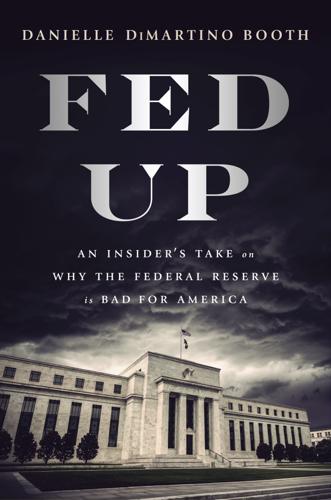
Fed Up: An Insider's Take on Why the Federal Reserve Is Bad for America
by
Danielle Dimartino Booth
Published 14 Feb 2017
Treasury Department in 1988 after three years as an Asia specialist at the consulting firm Kissinger Associates (which later became Kissinger McLarty), his only stint in the private sector. From 1998 to 2001, Geithner served as undersecretary of International Affairs under both Rubin and Summers, participating in negotiations involving various crises including the bailout of LTCM, the Mexican peso crisis, and the Asian meltdown. In October 2003, after rotating through positions at the Council on Foreign Relations and the International Monetary Fund (IMF), Geithner was named president of the New York Fed. Geithner’s appointment was met by snarky rumblings on the Street referring to him as a lackey for Summers and Rubin, the dynamic duo who championed deregulation of the financial system.

The Rough Guide to Mexico
by
Rough Guides
Published 15 Jan 2022
Painter Frida Kahlo dies. 1957 Famed muralist Diego Rivera dies. 1962 Carlos Fuentes publishes The Death of Artemio Cruz. 1968 Mexico City hosts the Olympic Games; the Tlatelolco massacre takes place. 1970 Mexico hosts the World Cup; it hosts a second time in 1986. 1985 The Mexico City earthquake kills at least ten thousand people. 1990 Octavio Paz becomes the first Mexican to win the Nobel Prize for Literature. 1992 NAFTA comes into force; Zapatista uprising in Chiapas; Mexican peso crisis (aka the “Tequila crisis”) caused by the sudden devaluation of the currency. 1995 The Colima-Jalisco earthquake kills at least 49 people. 1998 PAN candidate Vicente Fox Quesada is elected president; the end of PRI hegemony. 2001 Release of acclaimed movie Y Tu Mamá También, nominated for Best Original Screenplay at the 2002 Oscars. 2006 Felipe Calderón, controversially elected president, institutes a fierce campaign against the drug cartels. 2009 Calderón sends five thousand troops to patrol Ciudad Juárez as a result of the drug wars. 2009 The Swine Flu (H1N1) epidemic hits Mexico; 398 people die. 2010 Carlos Slim Helú, born in Mexico City, becomes richest man in the world (worth US$71 billion). 2012 Enrique Peña Nieto wins the presidency, heralding the return to power for the PRI.
…
This culminated in the December 1997 Acteal Massacre: 45 displaced Tzotzil Indigenous people, 36 of them women and children, were murdered at a prayer meeting by forces linked to PRI officials. Mexico today Despite the crisis in Chiapas, Mexico’s political reforms continued, with limits on campaign spending and the establishment of a federal electoral body in 1996 – the economy started to grow again that year (after another financial collapse, the “Tequila Crisis” of 1994), and has continued to expand ever since. But the biggest change of all came on July 2, 2000, when Vicente Fox Quesada, the PAN candidate, was voted in as president. It was a landmark event: not only was he the first opposition candidate ever to have been democratically placed in power, it was also the first peaceful transition between opposing governments since Independence.
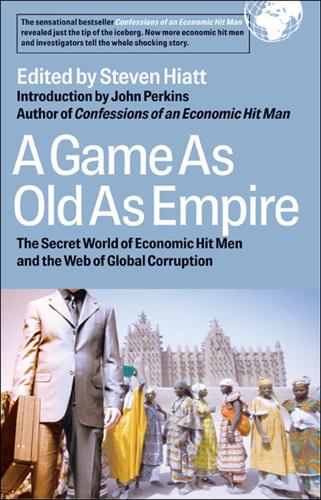
A Game as Old as Empire: The Secret World of Economic Hit Men and the Web of Global Corruption
by
Steven Hiatt; John Perkins
Published 1 Jan 2006
By the end of the Brady Plan in 1993, this semi-voluntary scheme had provided another modest dose of relief, mainly to middle-income Latin American countries like Argentina, Brazil, and Mexico, plus a few U.S. favorites elsewhere like Poland, the Philippines, and Jordan.35 With the help of taxpayer subsidies, the Brady Plan also succeeded in virtually wiping out the debts of a handful of smaller countries—Guyana, Mozambique, Niger, and Uganda. By 1994, just before Mexico’s “Tequila Crisis,” the Brady Plan had yielded about $124 billion (in 2006 NPV dollars) of debt relief, at a cost of $66 billion in taxpayer subsidies. Today, the Brady Plan remains the largest and most costly debt-relief initiative. Some analysts have argued that the Brady Plan also had an indirect beneficial effect on the quantity of new loans and investments received by debtor countries in 1989-93 because of its impact on equity markets and direct investment.
…
For example, Mexico’s leading banker, Robert Hernandez, purchased Banamex, the country’s second largest bank, from the Salinas government in 1991 for just $3 billion. Over the next decade, he received about $5 billion of financing from the Mexican government that was supposedly invested in the bank. Meanwhile, during the 1994-95 “Tequila Crisis,” former Goldman Sachs partner and U.S. Treasury Secretary Robert Rubin helped to assemble a $30 billion bailout package for Mexico from the World Bank, the IMF, and the U.S. government. Mexico, in turn, used a large share of the money to bail out banks such as Banamex. In theory, these banks should have become the property of the Mexican government again.
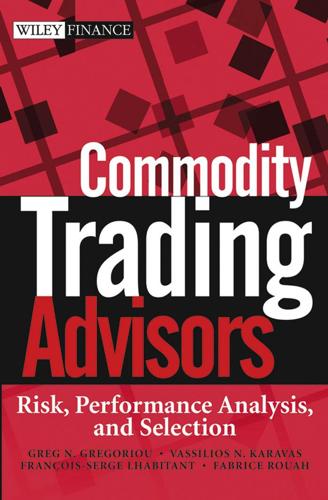
Commodity Trading Advisors: Risk, Performance Analysis, and Selection
by
Greg N. Gregoriou
,
Vassilios Karavas
,
François-Serge Lhabitant
and
Fabrice Douglas Rouah
Published 23 Sep 2004
INTRODUCTION In recent years, hedge funds and commodity trading advisors (CTAs) have drawn considerable attention from regulators, investors, academics, and the general public.1 Much of the attention has focused on the concern that hedge funds and CTAs exert a disproportionate and destabilizing influence on financial markets, which can lead to increased price volatility and, in some cases, financial crises (e.g., Eichengreen and Mathieson 1998). Hedge fund trading has been blamed for many financial distresses, including the 1992 European Exchange Rate Mechanism crisis, the 1994 Mexican peso crisis, the 1997 Asian financial crisis, and the 2000 bust in U.S. technology stock prices. A spectacular example of concerns about hedge funds can be found in the collapse and subsequent financial bailout of Long-Term Capital Management (e.g., Edwards 1999). The concerns about hedge fund and CTA trading extend beyond financial markets to other speculative markets, such as commodity futures markets.
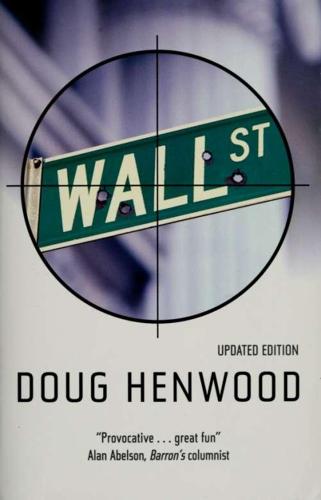
Wall Street: How It Works And for Whom
by
Doug Henwood
Published 30 Aug 1998
Despite all the hype about a borderless global economy, the world is still organized around national economies and national currencies; the foreign exchange market is where national price systems are joined to the world market. Problems in the relation between those countries and the outside world often express themselves as currency crises. Two recent examples of this are the European monetary crisis of 1992 and the Mexican peso crisis of 1994. In both cases, one could blame the turmoil on speculators, and one would be partly right — but also in both cases, the political momentum for economic integration had gotten way ahead of the fundamentals. Weaker economies like Italy's and Britain's were being thrust into direct competi- INSTRUMENTS tion with Germany's, just as Mexico was being thrown into competition with the U.S.
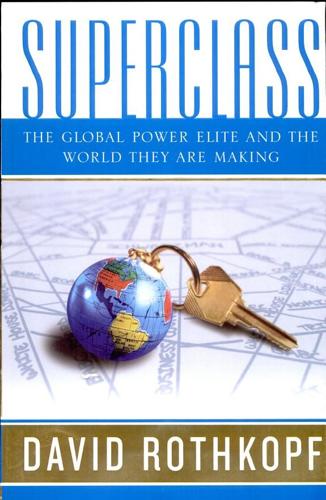
Superclass: The Global Power Elite and the World They Are Making
by
David Rothkopf
Published 18 Mar 2008
It is no accident that this group is broadly predisposed to policy prescriptions such as open borders, less regulation, and lower taxes. It also favors debt restructurings and bailouts for bad loans, as in the cases of the Brady Plan after the Latin debt crises of the 1980s and U.S. intervention to avert financial catastrophe in Mexico during the Tequila Crisis of late 1994 and 1995. In many respects this is not simply because one group influences another. It is because there is only one group, with its individual members moving from one set of jobs to another. Given that this group is globally sophisticated, well educated, intelligent, and successful by any measure, it is not surprising that much of what they advocate is also smart and worth implementing.
…
These interventions have produced other beneficiaries who turn out to have considerable influence, like federal contractors such as the company once led by Vice President Cheney, Halliburton. In a similar way, during the Clinton and prior Bush eras, many pointed out that the financial bailouts associated with the emerging markets crash of 1997-98, with the Tequila Crisis, and with the savings-and-loan crisis of the late 1980s and early ’90s greatly benefited the Wall Street colleagues and friends of Robert Rubin and Nicholas Brady, who also happened to be among the core groups they consulted in arriving at their decisions. Yes, these interventions also had important macroeconomic benefits, and the consequences of failing to undertake them would have been severe.

The Shifts and the Shocks: What We've Learned--And Have Still to Learn--From the Financial Crisis
by
Martin Wolf
Published 24 Nov 2015
The latter have suffered huge financial crises, big recessions, and correspondingly large rises in fiscal deficits and debt. This is the sort of picture we used to see in emerging and developing countries: one crisis came on the heels of another, notably the Latin American debt crisis of the 1980s, the ‘Tequila crisis’ in Mexico and then other Latin American countries in the mid-1990s, the Asian financial crisis of 1997–98, and the crises in Russia (1998), Brazil (1998–99) and Argentina (2000–01). But emerging countries suffered far fewer banking crises in the 2000s than in the 1980s and 1990s, largely because few had experienced big credit booms in the earlier 2000s.
…
John Maynard Keynes, Tract on Monetary Reform, 19232 Of all the many ways of organising banking, the worst is the one we have today. Mervyn King, ‘Banking from Bagehot to Basel, and Back Again’, 20103 Since 1980, the world has suffered six globally significant financial crises: the Latin American debt crisis of the early 1980s; the Japanese crisis of the 1990s; the Tequila crisis of 1994, whose epicentre was Mexico, but which also affected many parts of Latin America; the East Asian crisis of 1997–99; the global financial crisis of 2007–09; and the Eurozone financial crisis of 2010–13. This list leaves aside many national crises – the 2001 crisis in Argentina, for example – and significant regional crises, including the Scandinavian crisis of the early 1990s.
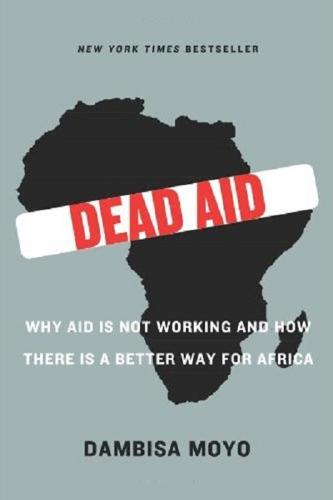
Dead Aid: Why Aid Is Not Working and How There Is a Better Way for Africa
by
Dambisa Moyo
Published 17 Mar 2009
The 1997 East Asian crisis is an illustration of this. Although the financial problems were initially confined to the East Asian economies, countries such as Brazil, where the stock market fell by 24 per cent, and South Africa, where it fell by 23 per cent (both in dollar terms) over the same period, also felt the pain. The Mexican tequila crisis of 1994 and the Russian flu of 1998 are other examples of how the international markets’ negative reactions to one country spill over and unfairly penalize other countries. In theory, the risk for an African government is that it could be susceptible to its neighbours’ bad news and, without notice, investors could take their money out, leaving a country cash-strapped.
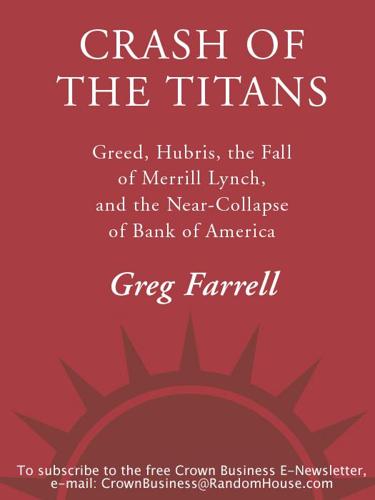
Crash of the Titans: Greed, Hubris, the Fall of Merrill Lynch, and the Near-Collapse of Bank of America
by
Greg Farrell
Published 2 Nov 2010
It was in line with a Goldman Sachs tradition in which senior partners left Wall Street for the halls of government. John Whitehead, who led Goldman Sachs in the 1980s, served as deputy secretary of state in the Reagan White House, and Rubin, who joined the Clinton administration, had won wide acclaim for his role in helping to defuse the Mexican peso crisis. Based on his success in Washington, Rubin was recruited to Citibank in 1999 by Sandy Weill to serve as vice chairman, a position that gave him wide-ranging power and a substantial paycheck without the nagging concerns of day-to-day responsibilities at the bank. A week after his conversation with Reed, Thain called his fellow MIT alumnus to discuss the NYSE opportunity further.
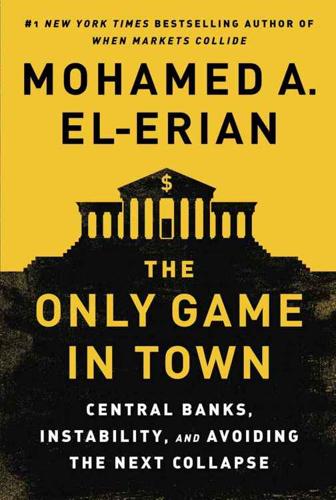
The Only Game in Town: Central Banks, Instability, and Avoiding the Next Collapse
by
Mohamed A. El-Erian
Published 26 Jan 2016
The generalized slowdown in growth is happening at a time when several economies have already used up some of the considerable resilience they had gained in the run-up to the 2008 global financial crisis—resilience that had served them and the global economy as well. Having gone through their own internally generated debt and financial crises—and multiple times, including during Latin America’s lost decade of the 1980s, the 1994–95 Mexican tequila crisis, the 1997 Asian crisis, the 1998 Russian default, the 2001 Argentine default, and the 2002 Brazilian crisis—many emerging economies embarked on comprehensive “self-insurance” programs. They involved various combinations of five key items that remain relevant today: • Building up large financial buffers in the form of ample international reserves; • Adopting more flexible exchange rates; • Reducing the currency mismatch between debt issuance and assets/revenues (or what is known by economists as the “original sin”); • Paying off some debt obligations and refinancing others on more favorable terms, including via longer maturities and lower interest rates; and • Embarking on institutional changes that render domestic economic management more responsible and responsive.
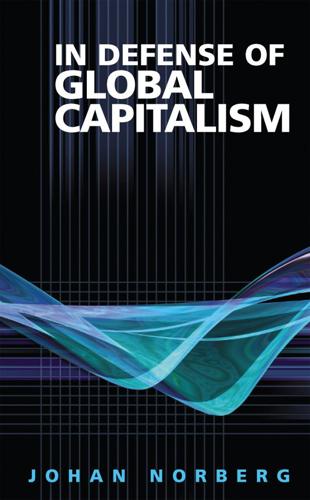
In Defense of Global Capitalism
by
Johan Norberg
Published 1 Jan 2001
We can compare the rapid recovery of many Asian states after the Asian crisis with Latin America’s crisis of the early 1980s, after which Latin American countries imposed controls on capital outflows and refrained from liberal reforms. The result was a lost decade of inflation, prolonged unemployment, and low growth. Compare Mexico’s rapid recovery after the ‘‘Tequila crisis’’ of 1995 with the same country’s prolonged depression after the debt crisis of 1982. Another problem with capital controls is that they are hard to maintain in a world of ever-improving, ever-faster communication. They are in practice an invitation to crime, and a great deal of investors’ time is devoted to circumventing the regulations.
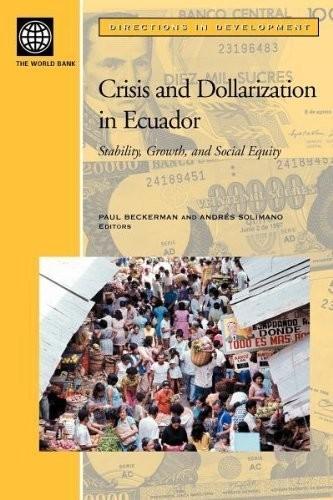
Crisis and Dollarization in Ecuador: Stability, Growth, and Social Equity
by
Paul Ely Beckerman
and
Andrés Solimano
Published 30 Apr 2002
Inflation declined sharply from the hyperinflation years 1989–90, but the 1990s were characterized by a strikingly high variability of real GDP growth. The economy grew rapidly in the years immediately following the institution of convertibility in 1991. In 1995, however, the Argentine financial system was badly affected by Mexico’s “Tequila” crisis (Baliño and others 1997 describe how the Argentine authorities coped with heavy deposit withdrawals while maintaining convertibility). After a recovery in 1996 and 1997, Argentina’s economy went into a protracted recession in 1998. Heavy external debt was a major contributor and the onset of the East Asian, Russian, and Brazilian financial crises compounded Argentina’s difficulties.

Losing Control: The Emerging Threats to Western Prosperity
by
Stephen D. King
Published 14 Jun 2010
Given that many profit-hungry US companies chose to invest all over the world – including its emerging parts – this is a remarkable and historically unprecedented result. Partly, it reflects the increasing instability of the financial system as a whole. Following the collapse of the Berlin Wall, crisis layered upon crisis: an early 1990s credit crunch, the 1992 European exchange-rate crisis, the Mexican ‘tequila’ crisis, the Asian crisis, the Russian and Argentine defaults, the dot.com bubble and subsequent bust, the sub-prime crisis and, of course, the global meltdown that followed. Figure 4.1: 10-year returns for US government bonds and US equities Source: HSBC Figure 4.2: 10-year annualized returns across developed and emerging nations Source: HSBC.
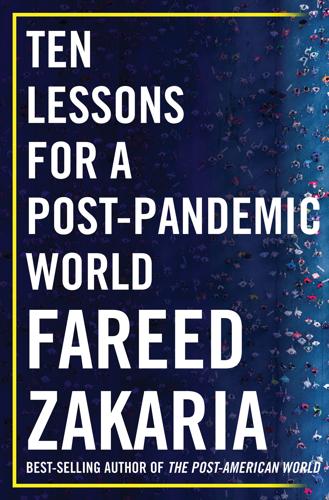
Ten Lessons for a Post-Pandemic World
by
Fareed Zakaria
Published 5 Oct 2020
From the mid-1930s to the early 1980s, when financial markets were more regulated, serious financial panics were few and far between. In recent decades, however, as governments deregulated finance, we have witnessed one crash after another: the Latin American debt crisis, the savings and loan collapse, the Mexican “Tequila” crisis, the Asian meltdown, the Russian default, the implosion of Long-Term Capital Management, the bursting of the tech bubble, and the global financial crisis. More open, more dynamic, more unstable. We have created a world that is always in overdrive. Human development in every sense has dramatically accelerated over the last two centuries, and that pace has quickened further in the last few decades.
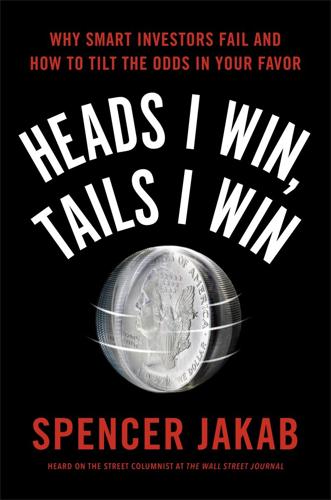
Heads I Win, Tails I Win
by
Spencer Jakab
Published 21 Jun 2016
But then there was an emerging-markets crisis and any stock with that label, including this one, fell sharply. Now, the origin of this particular swoon was Mexico, and the countries where this company did business were at least six thousand miles away from Mexico, so this baby was being thrown out with the bathwater. Some of their currencies weakened in sympathy with the “tequila crisis,” so I trimmed my valuation a bit to $85. The stock’s price, though, fell to something like $40. In other words, despite the fact that I cut the target a little, the implied gain for anyone who bought the stock had gone from 50 percent to well over 100 percent. Having been an analyst for only a year at that point, I didn’t see anything wrong with what I was doing.
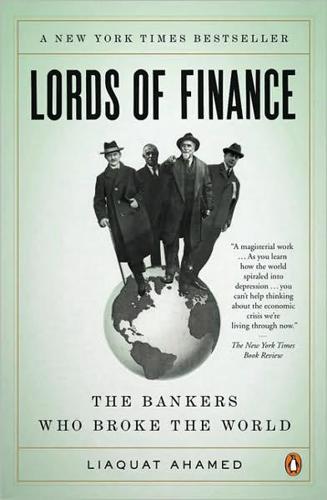
Lords of Finance: The Bankers Who Broke the World
by
Liaquat Ahamed
Published 22 Jan 2009
Part of the reason for the extent of the world economic collapse of 1929 to 1933 was that it was not just one crisis but, as I describe, a sequence of crises, ricocheting from one side of the Atlantic to the other, each one feeding off the ones before, starting with the contraction in the German economy that began in 1928, the Great Crash on Wall Street in 1929, the serial bank panics that affected the United States from the end of 1930, and the unraveling of European finances in the summer of 1931. Each of these episodes has an analogue to a contemporary crisis. The first shock—the sudden halt in the flow of American capital to Europe in 1928 which tipped Germany into recession—has its counterpart in the Mexican peso crisis of 1994. During the early 1990s, Mexico, much like Germany in the 1920s, allowed itself to borrow too much short-term money. When U.S. interest rates rose sharply in 1994, Mexico, like Germany in 1929, found it progressively harder to roll over its loans and was confronted with a similar choice between deflation or default.
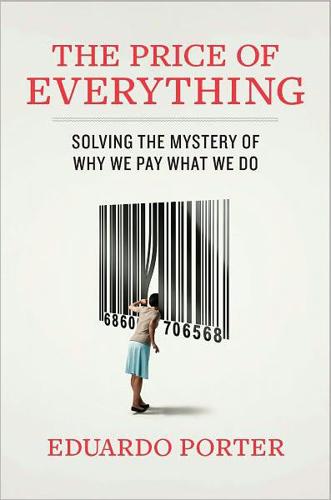
The Price of Everything: And the Hidden Logic of Value
by
Eduardo Porter
Published 4 Jan 2011
In 2010, Time Warner quietly spun off AOL for a tiny fraction of its price a decade before. The dot-com crash was preceded by the Asian financial crisis, with subsidiary bubblettes from Russia to Brazil, when a surge of money into promising “emerging markets” abruptly went into reverse. Similar dynamics caused investors to pummel the Mexican peso during the tequila crisis a few years before. Japan’s Nikkei 225 stock index tripled in real terms between January 1985 and December 1989, only to fall 60 percent over the next two and a half years. The very concept of a financial bubble is three hundred years old, added to the vernacular of finance in 1720 when French, Dutch, and British investors succumbed to euphoria over the potential of new trade routes across the Atlantic—pushing up stock prices before they ended in a precipitous crash.
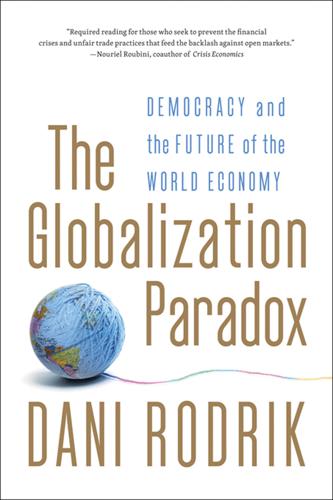
The Globalization Paradox: Democracy and the Future of the World Economy
by
Dani Rodrik
Published 23 Dec 2010
It was Europe’s turn in the early 1990s, when currency traders successfully speculated against the central banks of several European countries (such as England, Italy, and Sweden). These countries had tried to limit currency movement by tying their currencies closely to the deutschmark, but financial markets forced devaluations on them. The mid-1990s saw another round of financial crises, the most severe of which was the “tequila crisis” in Mexico (1994) brought on by a sudden reversal in capital flows. The Asian financial crisis followed in 1997–98, which would then spill over to Russia (1998), Brazil (1999), Argentina (2000), and eventually Turkey (2001). These are only the better-known cases. One review identified 124 banking crises, 208 currency crises, and 63 sovereign debt crises between 1970 and 2008.28 After a lull in the early years of the new millennium, the subprime mortgage crisis centered in the United States triggered another powerful set of tremors, confronting financially open economies with a sudden dearth of foreign finance and bankrupting a few among them (Iceland, Latvia).
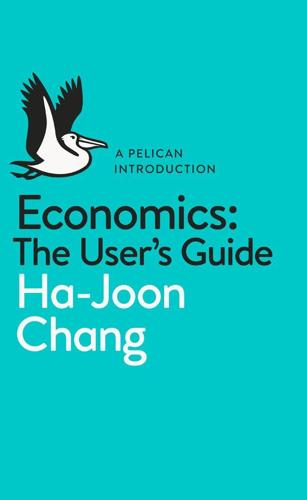
A Pelican Introduction Economics: A User's Guide
by
Ha-Joon Chang
Published 26 May 2014
In the late 1980s, the Savings and Loan (S&L) companies in the US – also known as ‘thrifts’ – got into massive trouble, having been allowed by the government to move into more risky, but potentially higher-yielding, activities, such as commercial real estate and consumer loans. The US government had to close down nearly one-quarter of S&Ls and inject public money equivalent to 3 per cent of GDP to clean up the mess. The 1990s started with banking crises in Sweden, Finland and Norway, following their financial deregulations in the late 1980s. Then there was the ‘tequila’ crisis in Mexico in 1994 and 1995. This was followed by crises in the ‘miracle’ economies of Asia – Thailand, Indonesia, Malaysia and South Korea – in 1997, which had resulted from their financial opening-up and deregulation in the late 1980s and the early 1990s. On the heels of the Asian crisis came the Russian crisis of 1998.

What's Next?: Unconventional Wisdom on the Future of the World Economy
by
David Hale
and
Lyric Hughes Hale
Published 23 May 2011
As if to reaffirm Mexico’s international prominence, for the first time, a Mexican man, Octavio Paz, won the Nobel Prize for Literature (1990) and a Mexican woman, Lupita Jones, became Miss Universe (1991). The prestige of the Salinas presidency evaporated with the Zapatista uprising in January 1994, two major political assassinations, the “Tequila Crisis” of December 1994, the first month of Ernesto Zedillo’s sexenio (1994–2000), and the incarceration of Salinas’s brother Raúl in 1995. But Mexico recovered rapidly with the help of a massive US-assisted bailout and continued to consolidate economically and politically under Zedillo. NAFTA led to an immediate increase in average foreign direct investment from US$5 billion to US$13 billion per year, and an average GDP growth (following the crisis year of 1995) of 5.5 percent for the rest of the sexenio. 2000—The Fox Revolution Sooner than anyone anticipated, perestroika led to glasnost.

The Blockchain Alternative: Rethinking Macroeconomic Policy and Economic Theory
by
Kariappa Bheemaiah
Published 26 Feb 2017
Although Nikolai Kondratiev was the first to study the economic effects of technology on prices, wages, interest rates, industrial production and consumption in 1925, Joseph Schumpeter was responsible for their entry into academia. 7In this paper, the model is driven by technological change that arises from intentional investment decisions made by profit-maximizing agents. 8See “A Failed Philosopher Tries Again.” 9(i) LatAm sovereign debt crisis - 1982, (ii) Savings and loans crisis - 1980s, (iii) Stock market crash - 1987, (iv) Junk bond crash - 1989, (v) Tequila crisis - 1994, (vi) Asia crisis - 1997 to 1998, (vii) Dotcom bubble - 1999 to 2000, (viii) Global financial crisis - 2007 to 2008. 10LHC: The Large Hadron Collider is the world’s largest and most powerful particle accelerator located at the CERN, the European Organization for Nuclear Research (Conseil Européen pour la Recherche Nucléaire).
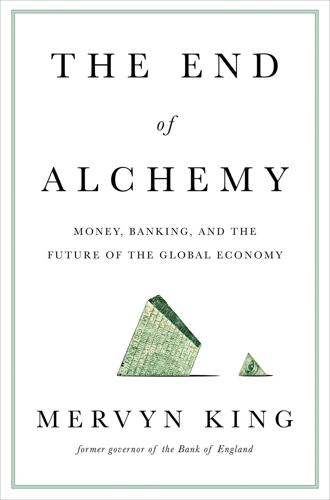
The End of Alchemy: Money, Banking and the Future of the Global Economy
by
Mervyn King
Published 3 Mar 2016
Morgan, 92, 95, 136–7, 161, 278 Kahn, Richard, 12, 292–3 Kahneman, Daniel, 132 Kay, John, 262 Keynes, John Maynard, 15, 20, 76, 100–1, 131, 233–4, 262; description of stock market, 152–3; on economists, 158, 289; and First World War, 193, 195–6, 198–9; The General Theory of Employment, Interest and Money (1936), 78, 292, 293, 294–5, 298; and WW1 reparations, 341, 343, 345 Keynesian economics, 5, 20, 45, 292–3, 306–7, 308–9, 317–18, 325, 326; and coordination problem, 295–302, 315–16, 332; and monetary policy, 78, 181, 182, 298–302; and neoclassical economics, 293–4, 302–3; and paradox of policy, 48, 326, 328, 333, 357; and recessions, 315–16, 327; role of sentiment and expectations, 293–7, 300, 301, 309; short-term stimulus during crisis, 39, 41, 48, 118–19, 326, 328, 356; and wages, 297–8, 300; waning influence of, 12, 318 Kiyotaki, Nobuhiro, 51, 82 Knickerbocker Trust Company, 196 Knight, Frank, 126–7, 131, 135, 145, 262 Kotlikoff, Laurence, 262 Krugman, Paul, 44, 302 Kumhof, Michael, 262 labour markets, 27, 29, 38, 327, 354, 355; and currency unions, 213, 225, 237; and Keynesian policies, 297–8, 300; and ‘rational’ expectations concept, 302–3; reforms, 41, 318, 363; ‘rigidities’ in wage adjustment, 167, 304 Lambert, Paul, 120 Latin America, 30, 339, 350 Latin Monetary Union (LMU), 216, 218 Lausanne conference (1932), 341 League of Nations, 219 Leeson, Nick, 137 legal system, 17, 81 Leggett, William, 250, 270–1 Lehman Brothers, 36–7, 89, 98, 113, 279, 323 Leibniz, Gottfried, 123 Leigh Pemberton, Robin, 176 Lenin, V.I., 163–4 leverage ratios (total assets to equity capital), 24, 25, 33, 36, 95–6, 110–11, 257, 276, 280, 307, 323; as regulatory heuristic, 139–40, 259 limited liability status, 98, 107–9, 254–5 liquidity, 119, 149, 163, 202–3, 208, 259, 269–81; and bank balance sheets, 97, 255, 257–8, 259; ‘Chicago Plan’ (1933), 261–4, 268, 273, 274, 277–8; coverage ratio, 256, 259; crisis (2007-8), 35–8, 64–5, 76, 110; demand for during crises, 65–6, 76–7, 86, 106, 110, 148, 182, 187–92, 194, 201–7, 253–4, 367; illusion of, 149–55, 253–4; liquidity regulation, 163, 187–92, 208, 259, 272, 276; ‘liquidity trap’ theory, 298–302; and money, 64–6, 76, 85, 86, 106, 119, 287 Lloyd George, David, 193, 195, 197–8, 199–200, 368 Long-Term Capital Management (LTCM), 120–1, 125 Lord’s cricket ground, 92 Lucas, Robert, 303 Macdonald, James, 350 Madoff, Bernie, 101 Magna Carta (1215), 286 Malthus, Thomas, 128 Mansfield, Lord, 260 market economy, 4–5, 10, 13, 17, 42–3, 50, 353–7; hypothetical grand auction, 79–81, 83, 128–9, 144, 149, 295, 297–8, 315; linking of present and future in, 11–12, 23, 46, 84–5, 325–6, 367; Adam Smith’s ‘invisible hand’, 79–80 ‘marking to market’ valuing, 147 Marshall, Alfred, 79 Martin, McChesney, 166 Marx, Karl, 19, 365 mathematics, 7, 12, 16, 93–4, 99–100, 121, 130, 143, 153, 293, 310 Max Planck Institute, Berlin, 123 McAdoo, William, 195, 196–7, 200, 201 McCain, John, 157 McCulloch, Hugh, 88 Meriwether, John, 121 Merkel, Angela, 224, 227 Merton, Robert, 120–1 Mesopotamia, 55–6 Mexico, 100, 367 Middle East, 56, 337 Mill, John Stuart, 214 Minsky, Hyman, 262, 306–8, 323 Mitchell, Andrea, 157 monetarism, 78 monetary policy, 45, 78, 167–72, 180–6, 247, 288, 315, 327–8, 352; and aggregate demand, 30, 41–9, 167, 184–5, 212–13, 221, 229–31, 291–2, 294–302, 319–24, 329–32, 335, 358; alternative strategies for pre-crisis period, 328–33; exhaustion of, 48, 347–8; and fiscal policy, 184, 347–8; and Great Depression (early 1930s), 76; and Great Stability, 22, 25, 30, 46–7, 315, 328–33; ‘helicopter drops’, 283, 358; intervention in asset markets, 172, 173–5, 265; and Keynes, 78, 298–302; and Diego Maradona, 176–7; and market expectations, 176–8; in post-crisis period, 48, 49, 168–9, 183–4, 291, 319–24, 335, 356, 358; short-term stimulus during crisis, 39, 41, 118–19, 182–3 monetary unions, 212–18, 238–49; see also European Monetary Union (EMU, euro area) money: acceptability criterion, 53, 54, 59–60, 61, 63, 64–6; and American colonists, 57–8, 68; central bank creation of, 65–6, 70–1, 160–1; commodities as, 55, 58, 68, 286–7; counterfeiting, 56, 57; definitions of, 53; and economists, 78–80; electronic transfers, 53, 281, 282–5; first paper banknotes, 57–8, 74; future of, 281–7; gold versus paper debate, 71–7; government monopoly on banknote issue, 62, 160; government printing of, 70, 85–6, 163–4, 358; history of, 4–5, 18–19, 54–8, 64, 67–8, 71–7, 160–1, 163–4, 187–202; history of (alternative view), 59–63; in Iraq (1991-2003), 218, 238–42; and liquidity, 64–6, 76, 85, 86, 106, 119, 287; ‘monetary base’, 291; and nation state, 211–12, 214, 215–18, 238–49; quantity theory of, 163; role and function of, 4–5, 8, 51–4, 57, 58–63, 65–6, 83–6, 281; role of precious metals, 55–7, 58, 59, 60, 62, 66, 71–7, 86, 216; and Scottish independence referendum (2014), 243–5, 248; share of bank deposits in total money, 62–3; single unit of account, 285–7; St Paul’s Epistle to Timothy, 51, 52; stability criterion, 53, 54, 60, 61, 63, 66–71, 163; standardised coinage, 56; and trust, 8, 55, 57, 66–71, 82–3, 155; UK Currency and Bank Notes Act (1914), 198 money market funds, 112–13 money supply, 62–3, 76, 77, 78, 85–7, 162, 327; and central banks, 63, 65–6, 76, 86–7, 162, 163, 180–4, 192, 196–201; ‘monetary base’, 65–6 Monti, Mario, 225 Moore, John, 51, 82 moral hazard, 192, 268, 274–5, 344 Morgan, John Pierpont (J.P.), 161, 196 Morgan Stanley, 98 mortgage-backed securities (MBS), 35, 64, 99, 113, 142, 143, 144, 150 mortgages, 32, 138, 139, 173, 174, 258, 335–6; sub-prime, 35–6, 99, 100, 143 Mundell, Robert, 212 Muth, John, 303 mutual funds, 102, 112–13 Nakamoto, Satoshi, 282 Napoleon Bonaparte, 28, 68, 159 nation states, 211–14, 215–18, 238–49; post-war expansion in numbers of, 214–15; sovereignty and economic integration, 212–13, 348–9, 351 neoclassical economics, 293, 294, 302–3, 304, 306; ‘New Keynesian’ models, 305–6; ‘optimising’ model, 129–31, 132, 134, 138, 309, 311; ‘rational’ expectations concept, 303–5, 310, 314; stability heuristic, 312–14, 319–21, 323, 331, 332 Netherlands, 49, 230 New Zealand, 92, 167, 170, 179, 348 Nixon, President Richard, 73 Norman, Montagu, 13 North Korea, 68 Northern Rock, 107, 139, 205 Obama, Barack, 334 oil market, 21, 295–6, 306, 318, 362 Olympic Games, London (2012), 227 O’Neill, Onora, 81 Overend, Gurney & Co, 189–90, 191 Panama, 246, 287 Pascal, Blaise, 123 Paulson, Hank, 37–8 pawnbroker for all seasons (PFAS) approach, 270–81, 288, 368 pension funds, 32, 103, 112, 183, 204 Pitt, William (the Younger), 75 Portugal, 221, 222, 224, 229, 363–4 Prince, Chuck, 90 prisoner’s dilemma, 25, 81, 89–90, 255, 302, 332, 333, 368; central banks and interest rates, 335; definition of, 9–10; escaping, 347–8, 352–3 privatisation, 41 probability theory, 121, 123, 302–3, 311 productivity (output per head), 17–19, 42, 318–19, 354, 359–62; see also economic growth Prudential Regulation Authority, UK, 260 quantitative easing (QE), 47–8, 182–3, 270, 275, 358 radical uncertainty, 9, 11–12, 126–31, 247, 257–9, 304–5, 306, 308; and Arrow–Debreu grand auction, 80, 83, 128–9, 144, 149, 295, 297–8, 315; and banking sector, 42–3, 106–10, 125, 136–40, 191, 257–8, 264–5, 269, 281; and central banks, 166–7, 171, 179, 180, 259; and coordination problem, 295–303, 310, 315–16, 332, 333; coping behaviour, 130–40, 150, 153–5, 170, 270–1, 288, 310–15, 316–17, 330–1, 352–3; and financial markets, 140, 143, 144–5, 149–55; heuristics, 130–1, 134–40, 170, 208, 278, 310–11, 312–14, 319–21, 323, 331, 332; illusion of certainty, 121–6; illusion of liquidity, 149–55; and Keynes, 293–302; and money, 42–3, 83–6; and narrative, 136, 137, 150, 153, 257, 310–16, 319–21, 323–4, 328, 332–3, 356, 357; narrative revision downturns, 328, 332–3, 356, 357, 358–9, 364; neoclassical rejection of, 302; as precondition of capitalist economy, 145; and ‘rational’ expectations concept, 304–5, 310, 314; and risk weights, 138–9, 258–9, 277; role of expectations, 310–17, 323, 331–3 rating agencies, 146, 224 ‘rational’ expectations concept, 302–4, 310, 314 regulation, 10, 17, 62, 112–13, 114, 137–9, 255–61, 280; Basel Committee, 255, 276; deregulation from late 1970s, 22, 23–4, 98, 174, 255; and extreme complexity, 259–61, 275–6; lax, 6, 33; PFAS approach, 270–81, 288; post-crisis reforms, 40–1, 255–6, 257–61; reintroduction of ring-fencing, 256, 264 Reinhart, Carmen M., 308 resolution mechanisms, 256, 279 Richardson, Gordon, 176 risk, 84, 121–2, 123, 124, 126–9, 143, 254; implicit taxpayer subsidy for, 191–2, 207, 254–5; maturity and risk transformation, 104–15, 117–19, 250–1, 254–5; ‘optimising’ model, 129–31, 132, 134, 138, 309, 311; risk premium, 32–3, 115, 183; risk weights, 138–9, 258–9, 277 Robinson, Joan, 12, 292–3 Rodrik, Dani, 348 Rogoff, Kenneth, 44, 308 Rome, ancient, 59, 164, 216 Roosevelt, President Franklin, 91, 316 Royal Bank of Scotland (RBS), 37, 89, 118, 206, 243 Russia, 121, 159 saving, 101–2, 155, 308–17, 362–3; in emerging economies, 22–3, 27–8, 29, 30; ‘paradox of thrift’, 297, 326; ‘savings glut’, 28, 29, 30, 46, 319, 325; as source of future demand, 11, 46, 84–5, 185, 325–6, 356 Schacht, Hjalmar, 341–2, 343 Schäuble, Wolfgang, 211 Scholes, Myron, 120–1 Schumpeter, Joseph, 152 Schwartz, Anna, 192, 328 Scotland, 218, 243–7, 248 Second World War, 20, 21, 219, 242, 317, 342 secular stagnation theory, 44, 291–2, 355 Seneca, 123–4 11 September 2001 terrorist attacks, 124 ‘shadow’ banking system, 107, 112–14, 256, 262, 274 Shiller, Robert, 151 Silber, William, 206 Simons, Henry, 262 Sims, Christopher, 79 Slovakia, 216 Smith, Adam, 17–18, 54–5, 79–80, 163 Smith, Ed, 124 sovereign debt (government bonds), 32, 65, 92, 138, 182–4, 196–7, 203, 258, 259, 338–40; bond yields, 29, 183–4, 224, 227, 228, 231, 299, 336; in euro area, 162, 190, 224, 226–31, 258, 338, 339–40, 342–4; framework for restructuring, 346–7; need for export surplus before payment, 339–40, 341–3; WW1 reparations, 340–2, 343, 345–6 Soviet Union, 27, 68, 216 Spain, 47, 93, 159, 216, 221, 222, 227–8, 229, 257–8, 355, 363–4 special purpose vehicles, 113–14 stock markets, 102, 125–6, 133, 151–4, 194, 195, 200, 347 Stresemann, Gustav, 219 Summers, Larry, 44 Sweden, 159, 166, 173, 179, 216–17, 279, 335 Swift, Jonathan, ‘Thoughts on Various Subjects’ (1703), 250, 290 Switzerland, 33, 70, 100, 118, 184, 216, 335 Syed, Matthew, 124 Taylor, John, 168 technological change, 83–4, 127, 129, 153–4, 281, 291, 354, 355, 365 Tequila crisis (1994), 367 Thaler, Richard, 132 Thornton, Henry, 188 Tobin, James, 262 trade surpluses and deficits, 33, 34, 46, 319, 321–2, 329, 352, 356, 364; in emerging economies, 27–8, 30, 329; in EMU, 222, 232–3, 236, 363–4; and exchange rates, 22–3; and interest rates, 23, 30, 46, 319–20; likely re-emergence of, 48–9 trading, financial, 3, 24, 64, 99–100, 257; bonuses, 99, 101, 117, 144, 147; erosion of ethical standards, 100–1, 288; ‘front-running’, 153–4, 284 Transatlantic Trade and Investment Partnership (TTIP), 361 Trans-Pacific Partnership (TPP), 361 Trichet, Jean-Claude, 225 trust, 10, 81–3, 106; and monetary unions, 220, 232, 237; and money, 8, 55, 57, 66–71, 82–3, 155 Tsipras, Alexis, 230, 231 Tuckett, Professor David, 133–4 Turner, Adair, 324 Tversky, Amos, 132 unemployment, 38, 292, 293, 294, 297–9, 302, 326–7, 329, 330; in euro area, 45, 226, 228, 229–30, 232, 234, 345; and inflation targeting, 168, 169; and interest rates, 169, 298–300; ‘stagflation’ (1970s), 5, 302–3, 318 United Kingdom: Acts of Union (1707), 215; alternative strategies for pre-crisis period, 328–32; Banking Act (2009), 40; Banking and Joint Stock Companies Act (1879), 109; Banking Reform Act (2013), 40; ‘Big Bang’ (1986), 23; City of Glasgow Bank failure (1878), 108–9; commercial property market, 47, 118; Currency and Bank Notes Act (1914), 198; Labour government (1964-70), 20; as monetary union, 215; need for export sector support, 357, 364; return to gold standard (1920s), 76; Scottish independence referendum (2014), 218, 243–5, 248; trade deficits, 30, 321, 322, 329, 364; tradition of national branch banking, 116; see also Bank of England United Nations, 214–15 United States: 1914 financial crisis, 192–201, 206; Aldrich-Vreeland Act (1908), 196, 206; Bureau of War Risk Insurance (1914), 200; Constitution, 286; Dodd-Frank Reform (2010), 40, 260; dollar and gold link, 73, 195, 200–1; dollar as world’s reserve currency, 25, 28, 34; ‘double liability’ (1865-1934), 107–8; ‘free banking’ era, 60–2, 77, 161; Glass-Steagall Act (1933), 23, 98, 260; gold reserves, 74, 77; Gramm-Leach-Bliley Act (1999), 23, 98; history of money in, 57–8, 67, 68, 160–1, 187, 188, 212, 215; as monetary union, 212, 215, 234; need for export sector support, 357, 364; New York becomes world money centre, 194–5, 200–1; notes and coins in, 281; Office of the Comptroller of the Currency, 137, 206; trade deficits, 30, 34, 46, 49, 319, 321, 329, 364 Van Court’s Counterfeit Detector and Bank Note List, 61 Vietnam War, 5, 20, 73, 306 Viniar, David, 123 Volcker, Paul, 176, 288 Voltaire, 126 Wall Street Crash (1929), 347 Walpole, Horace, 369 Walras, Léon, 79 Washington, George, 286 Weatherstone, Sir Dennis, 136–7, 278 weights and measures, 212, 286, 287 Wheeler, Judge Thomas C., 162 wholesale funding, 97 Willetts, David, 83 Wilson, Brigadier-General Henry, 89 Wimbledon tennis championships, 142, 187–8 Wolf, Martin, 96, 262 World Bank, 21, 350 World Trade Organisation, 361 Yellen, Janet, 176, 287 Yugoslavia, break-up of, 216 Zimbabwe, 68, 69–70 ABOUT THE AUTHOR Mervyn King was Governor of the Bank of England from 2003 to 2013, and is currently Professor of Economics and Law at New York University and School Professor of Economics at the London School of Economics.

Traders, Guns & Money: Knowns and Unknowns in the Dazzling World of Derivatives
by
Satyajit Das
Published 15 Nov 2006
High returns available on local currency securities enticed investors to dabble in exotic currencies and high credit spreads on dollar denominated securities encouraged them to take on exotic credit risk. Derivatives facilitated investor access and allowed them to gain exactly the kind of exposure to the market they wanted. In 1995, Mexico experienced the Tequila crisis. In 1997, the Asian century was still- DAS_C02.QXP 8/7/06 4:22 PM Page 45 1 N Financial WMDs – derivatives demagoguery 45 born. In 1998, Russia defaulted. In 2001, Argentina completed its transition from first world to third world economy under the weight of debts that the country would never be able to service, let alone repay.
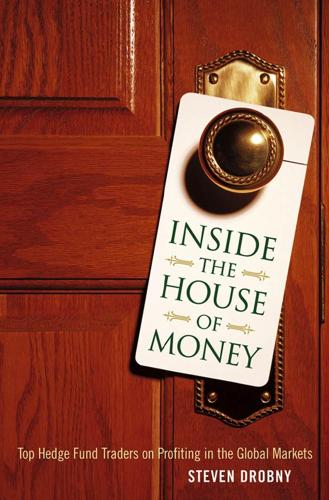
Inside the House of Money: Top Hedge Fund Traders on Profiting in a Global Market
by
Steven Drobny
Published 31 Mar 2006
Again, talking about the ability to trade size in directional opportunities, you could have put tens of billions of dollars to work on this trade and made a killing. Are the best opportunities in emerging markets always after panics and natural disasters? For sure. There’s no doubt about it, but we obviously never wish bad things on anyone. 297 THE EMERGING MARKET SPECIALIST 2000 Tequila Crisis Spread at 1900 Basis Point Spread to U.S. Treasuries 1750 1500 1250 1000 Spread Compressed to 400 Over and Trade Exited 750 500 FIGURE 14.1 7 l-9 Ju r-9 7 7 Ap 6 -9 Ja n 6 t-9 Oc l-9 Ju r-9 6 6 Ap 5 -9 Ja n 5 l-9 t-9 Oc 5 Ju r-9 Ap -9 5 4 Ja n 4 l-9 Oc Ju t-9 4 r-9 Ap Ja n -9 4 250 JP Morgan All Brady Index (EMBI Spread), 1994–1997 Source: JP Morgan.
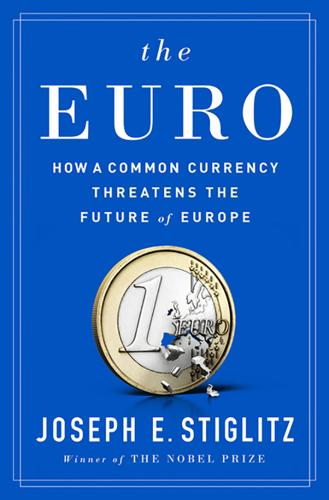
The Euro: How a Common Currency Threatens the Future of Europe
by
Joseph E. Stiglitz
and
Alex Hyde-White
Published 24 Oct 2016
With Jason Furman, who would later go on to be the chairman of President Obama’s Council of Economic Advisers, I wrote a paper trying to understand the factors contributing not only to the East Asia crisis but to crises more generally: “Economic Crises: Evidence and Insights from East Asia,” Brookings Papers on Economic Activity No. 2, September 1998, pp. 1–114 (presented at Brookings Panel on Economic Activity, Washington, DC, September 3, 1998). And also with three World Bank colleagues—Daniel Lederman, Ana María Menéndez, and Guillermo Perry—I wrote a couple of papers trying to understand the Mexican crisis of 1994–1995: “Mexican Investment after the Tequila Crisis: Basic Economics, ‘Confidence’ Effect or Market Imperfection?,” Journal of International Money and Finance 22, no. 1 (February 2003): 131–51; and “Mexico—Five Years After the Crisis,” in Annual Bank Conference on Development Economics 2000 (Washington, DC: World Bank, 2001), pp. 263–82. Finally, with two other World Bank colleagues—William R.
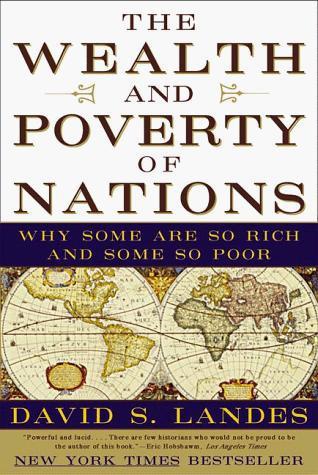
The Wealth and Poverty of Nations: Why Some Are So Rich and Some So Poor
by
David S. Landes
Published 14 Sep 1999
Such structures are intrinsically brittle, because everyone is straining to the limit and everything is interconnected. Sooner or later, someone gets worried; the balance sheets do not balance; the lenders get cold feet; it becomes impossible to pay old debts with new. Panic! This happened in the Mexican peso crisis of 1994-95. It couldn’t have come at a worse (some would say, a better) time, just after the American administration managed to squeeze through the North American Free Trade Agreement (NAFTA) by calling in every political chip and committing to a mountain of anti-economic favors. Now it had to find tens of billions to reassure the market and give investors and monetary allies the time to pull their chestnuts out.
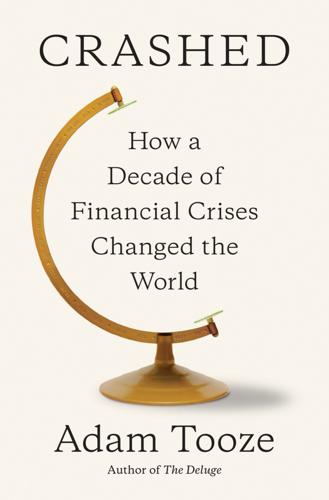
Crashed: How a Decade of Financial Crises Changed the World
by
Adam Tooze
Published 31 Jul 2018
As a result, Mexico’s dependence on the United States was overwhelming. In 2007, 80 percent of Mexico’s exports were sent to the United States. As the American crisis hit, Mexico’s GDP fell by almost 7 percent, a worse contraction even than during the homegrown financial crisis of 1995—the so-called Tequila Crisis.51 Mexico’s nonoil exports fell by 28 percent between May 2008 and May 2009. Automotive exports fell by 50 percent.52 In the northern industrial cities of Ciudad Juárez and Tijuana, the great maquiladora export processing centers, employment in manufacturing fell by more than 20 percent. Together with the surging violence of the drug wars, the recession led more than 100,000 desperate workers and their families to abandon Juárez.